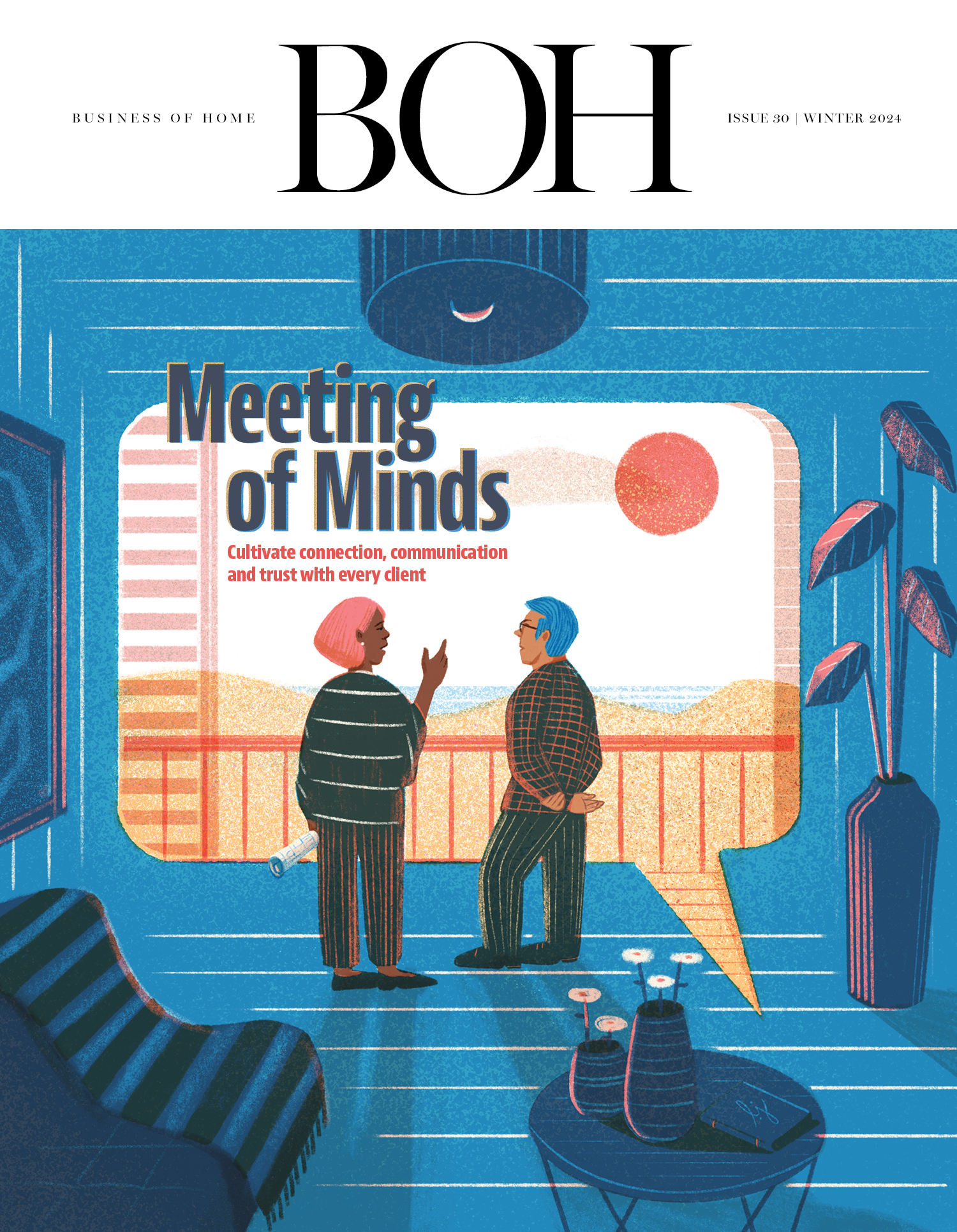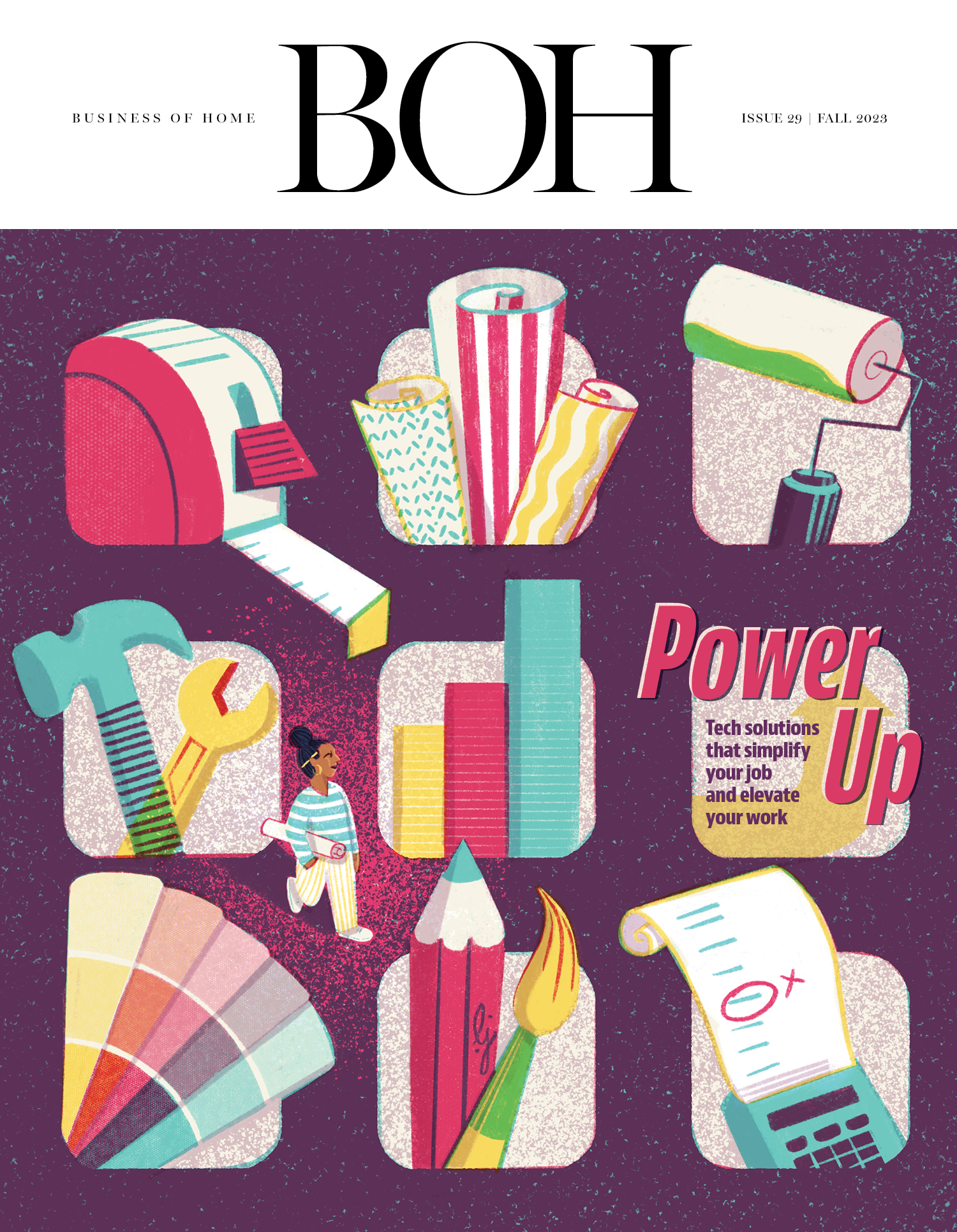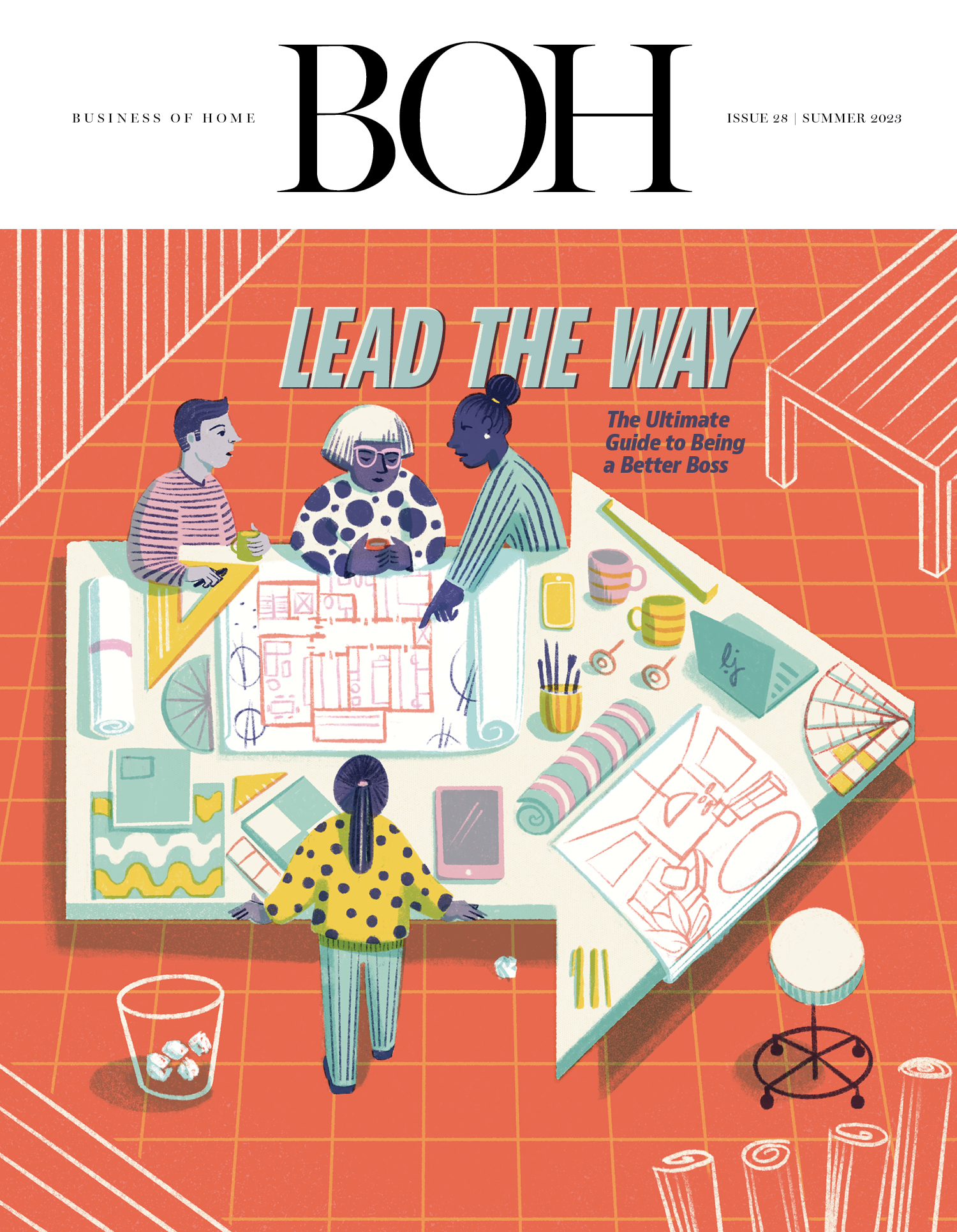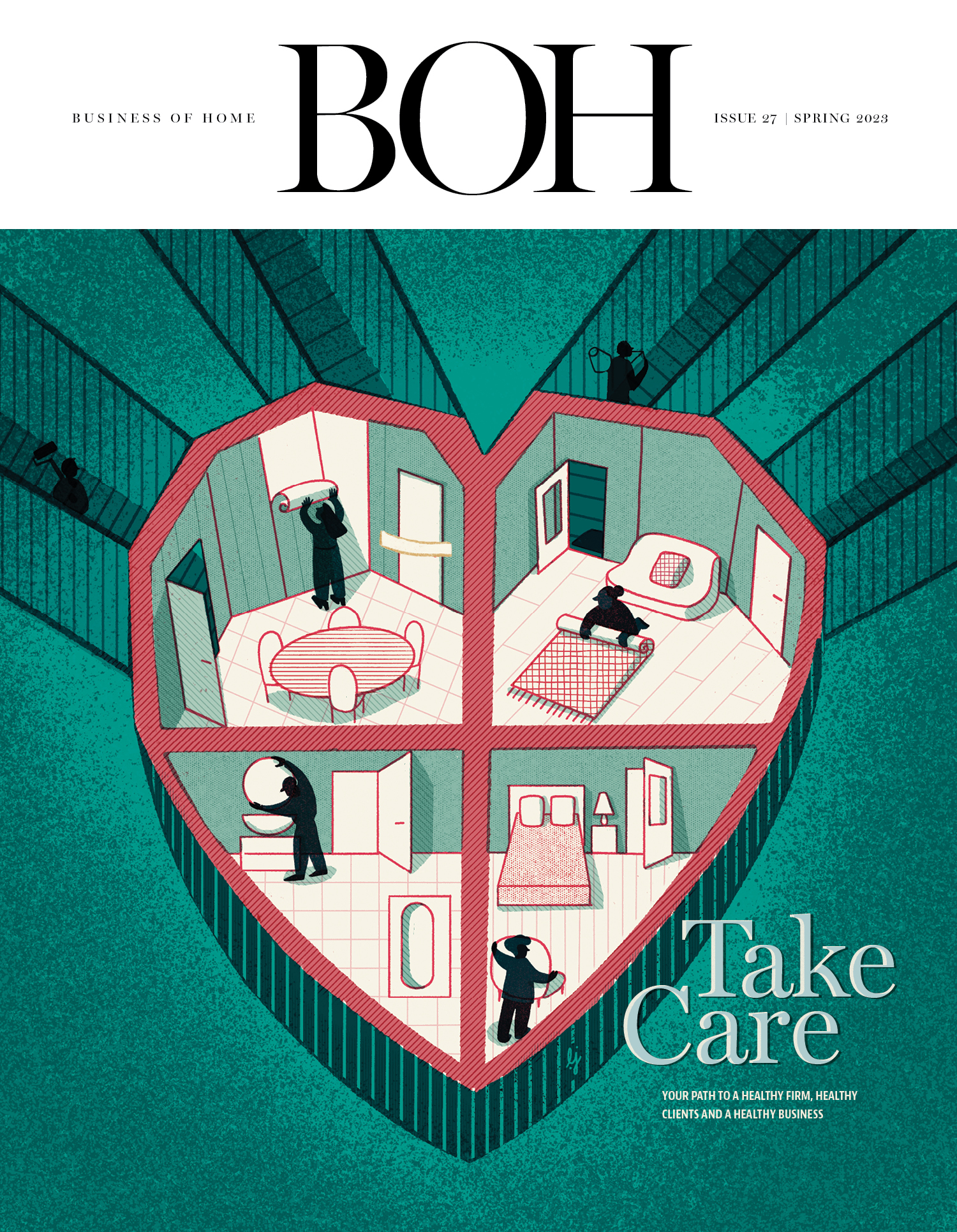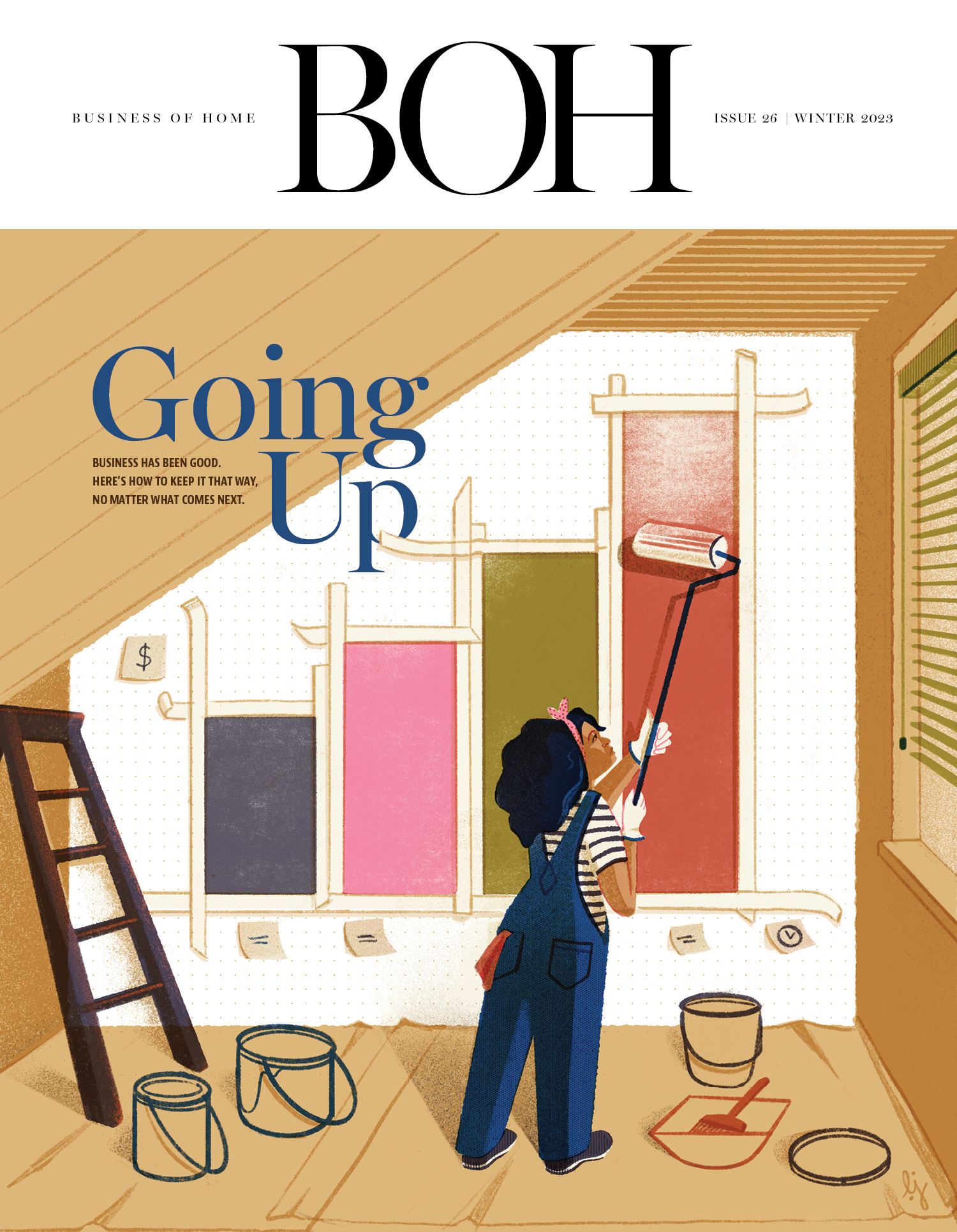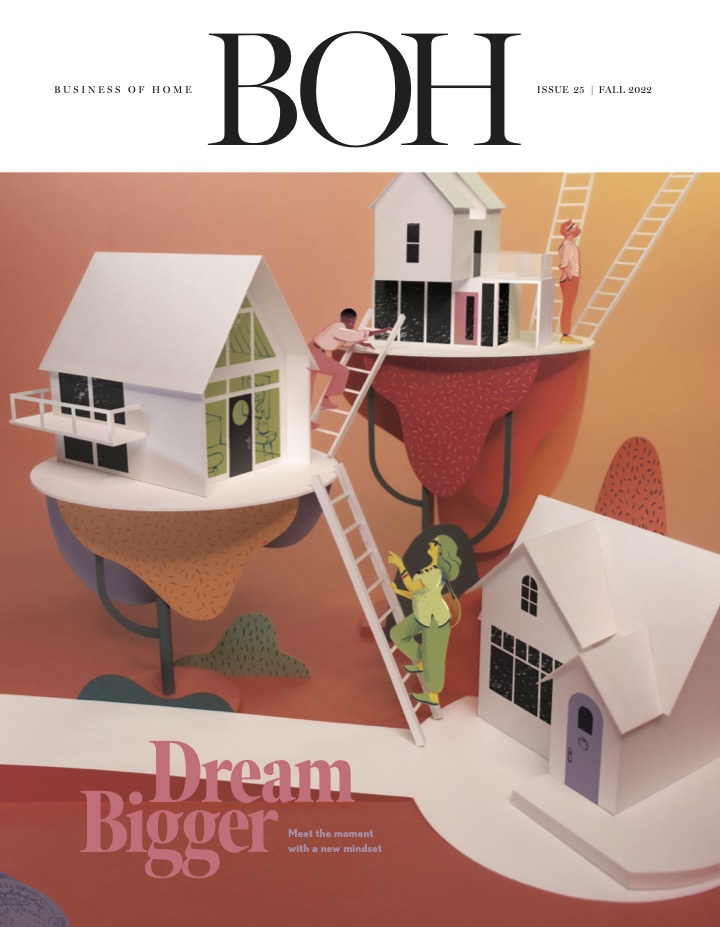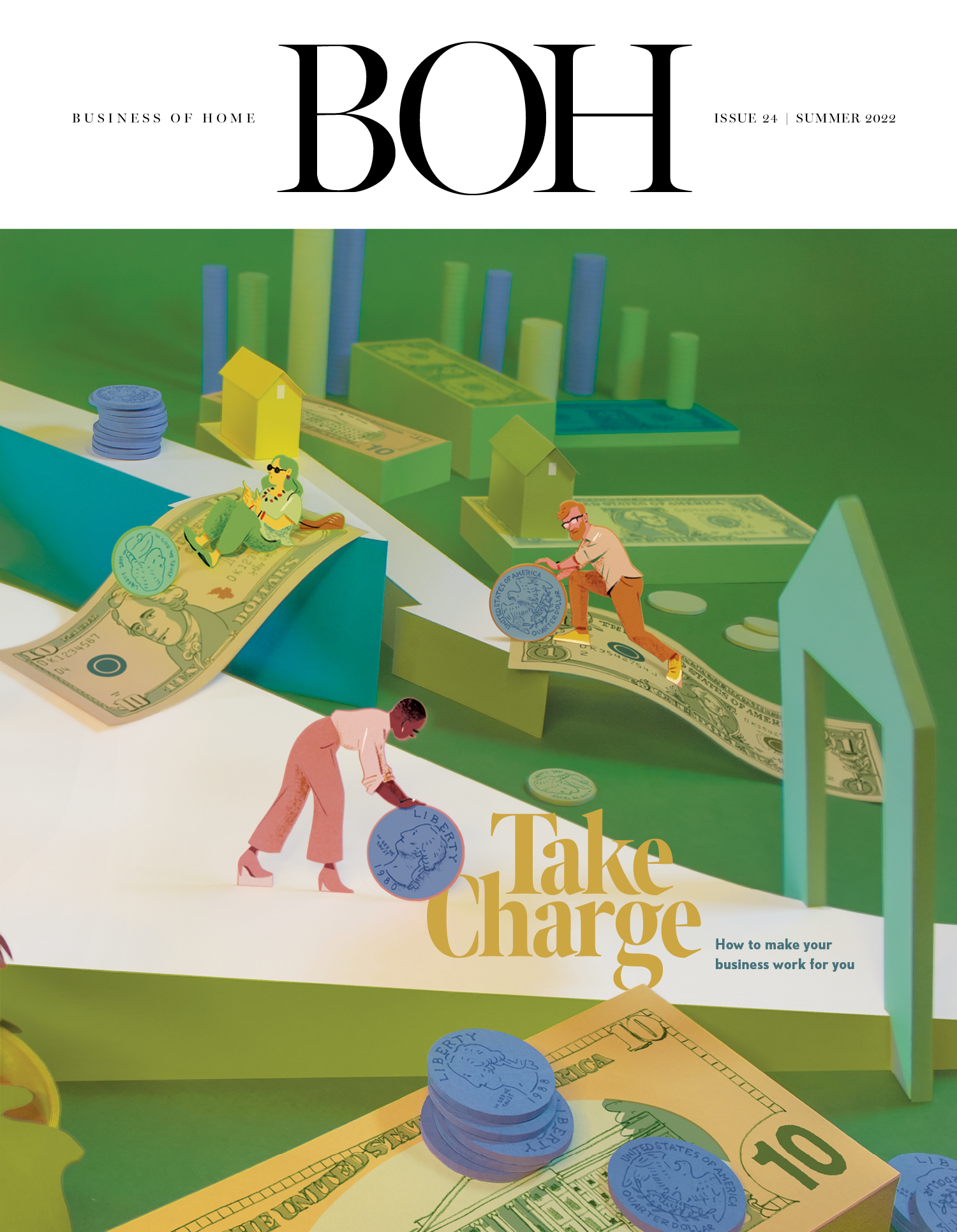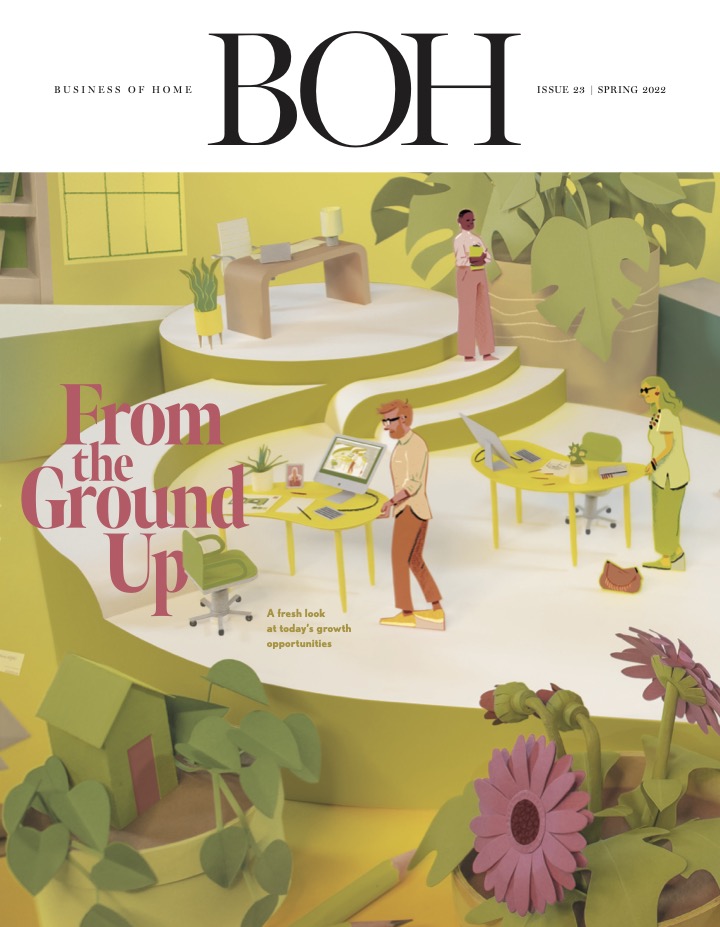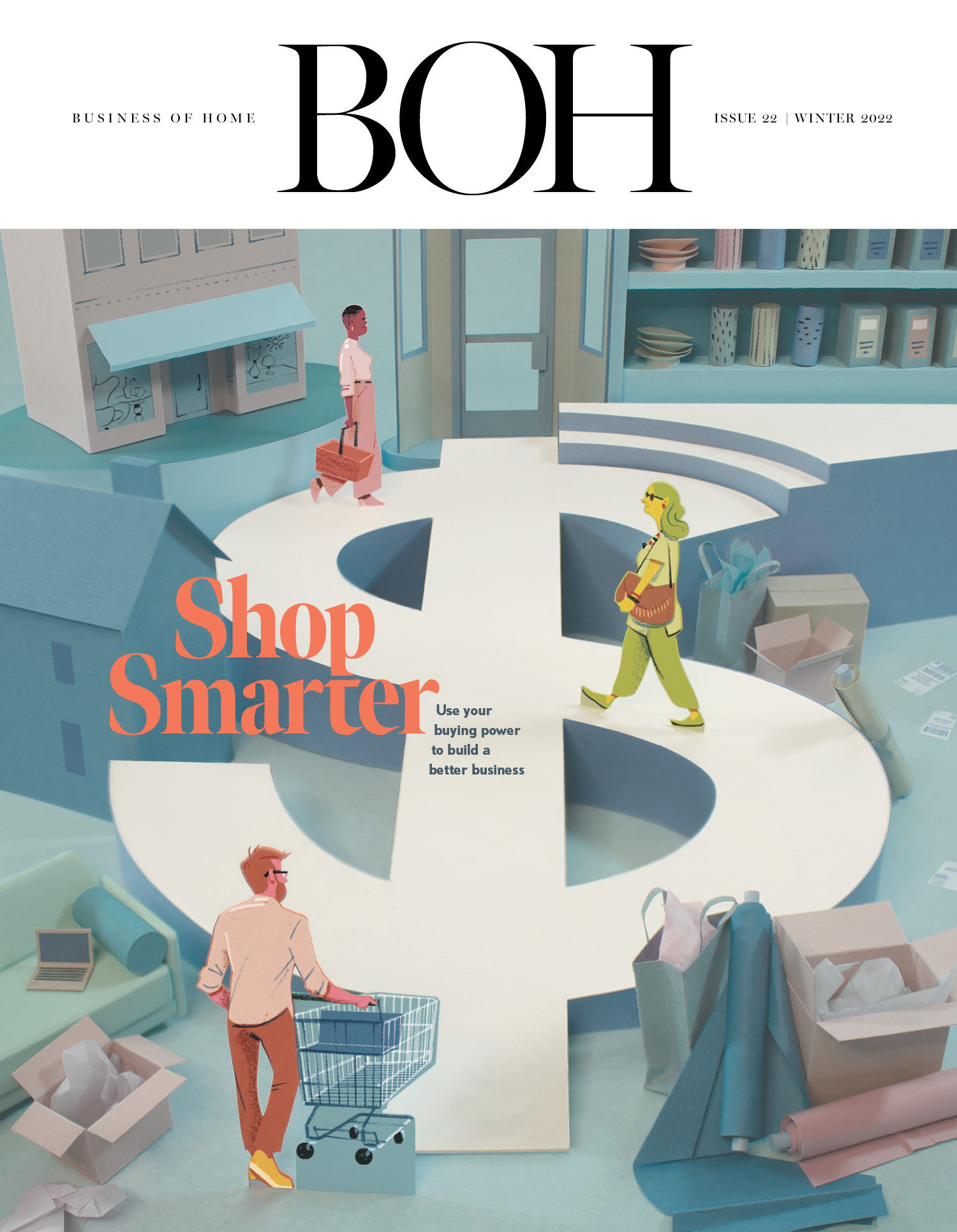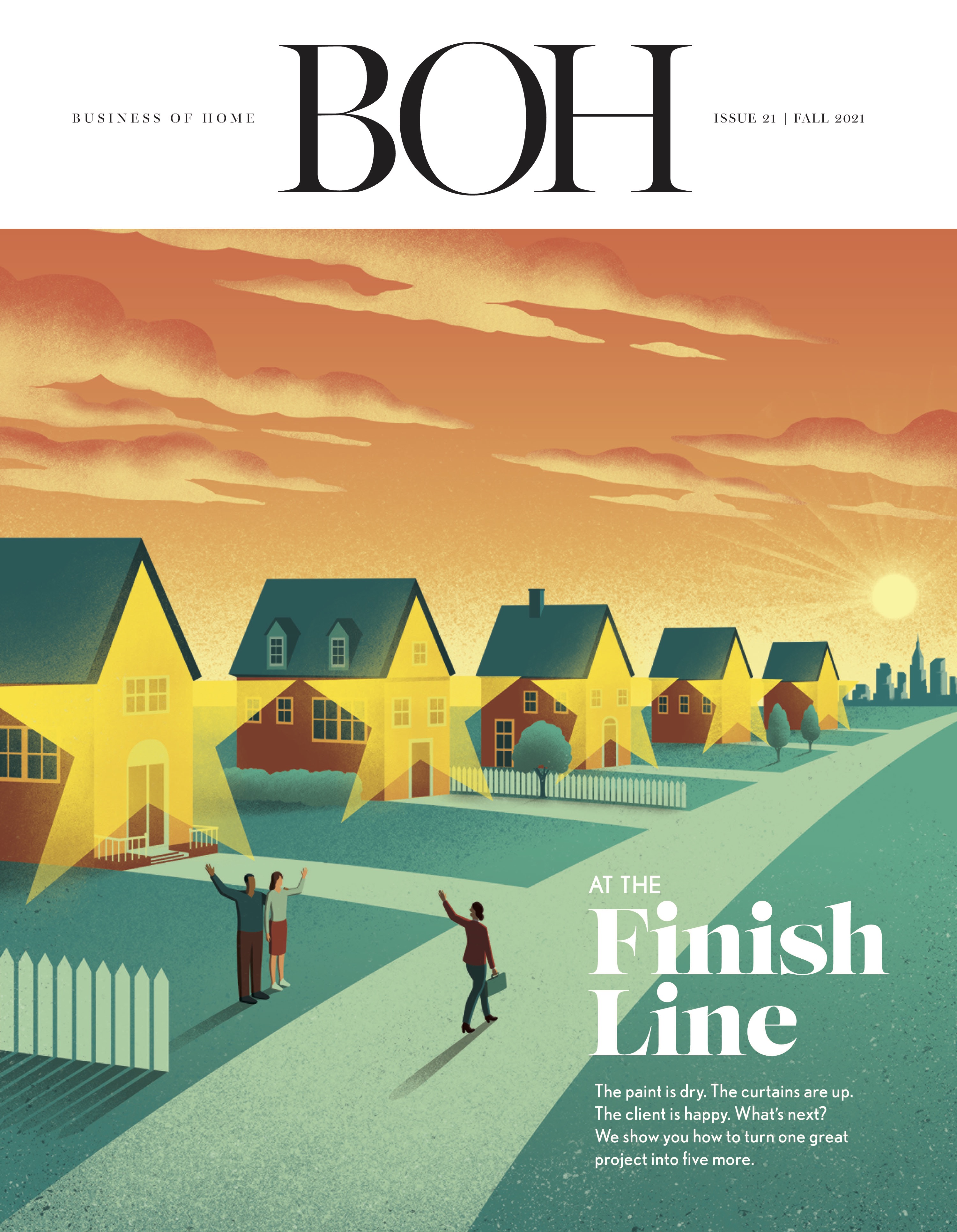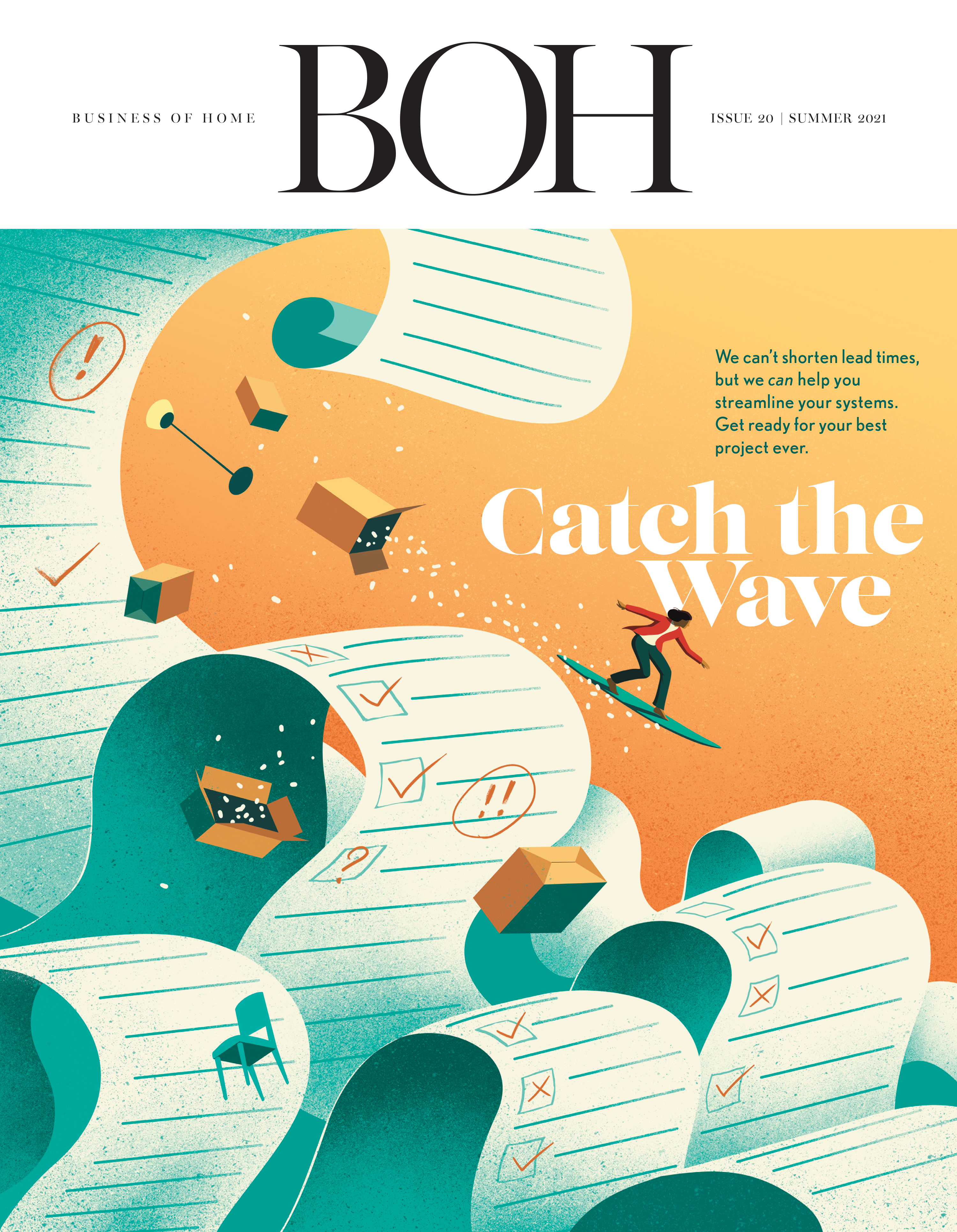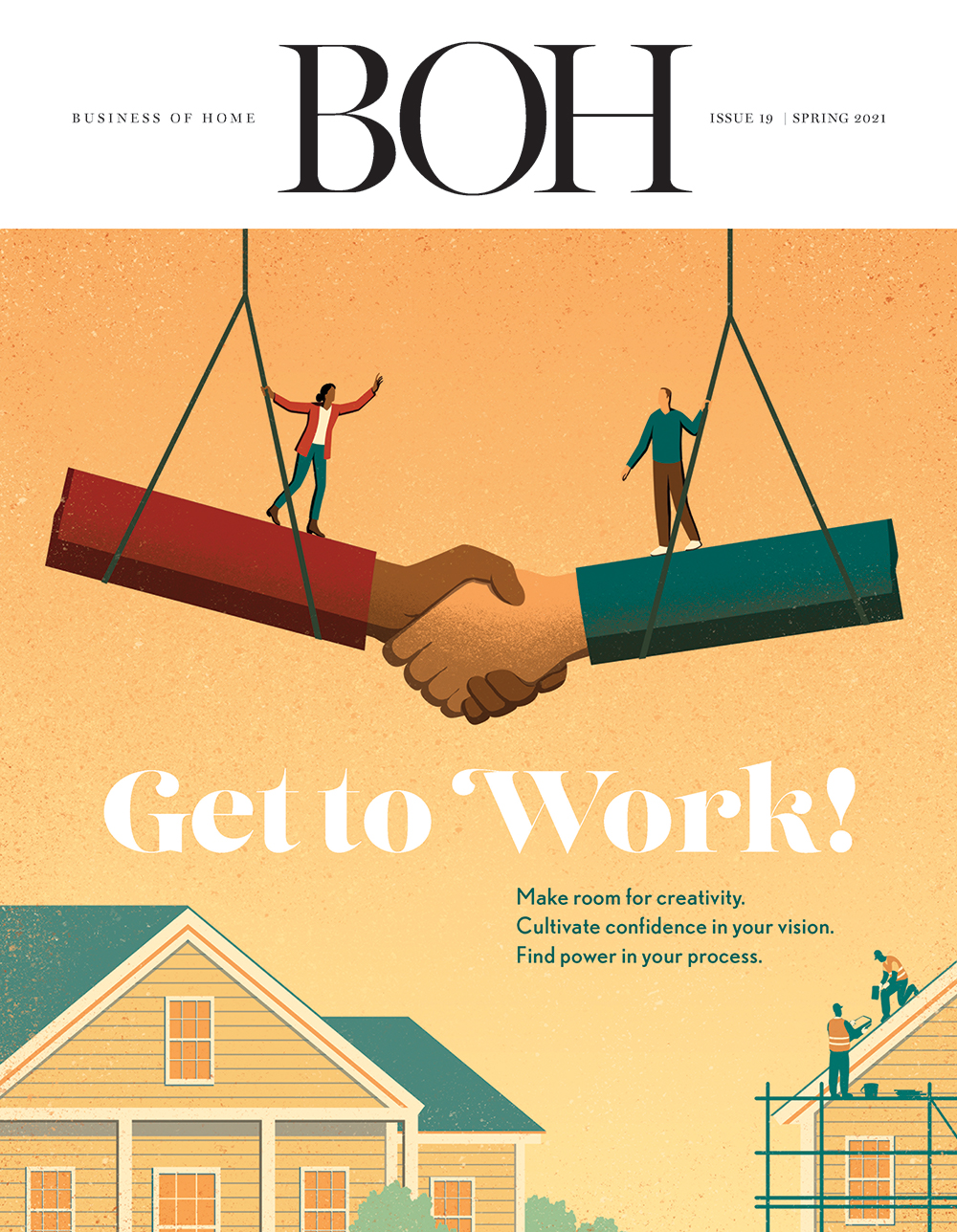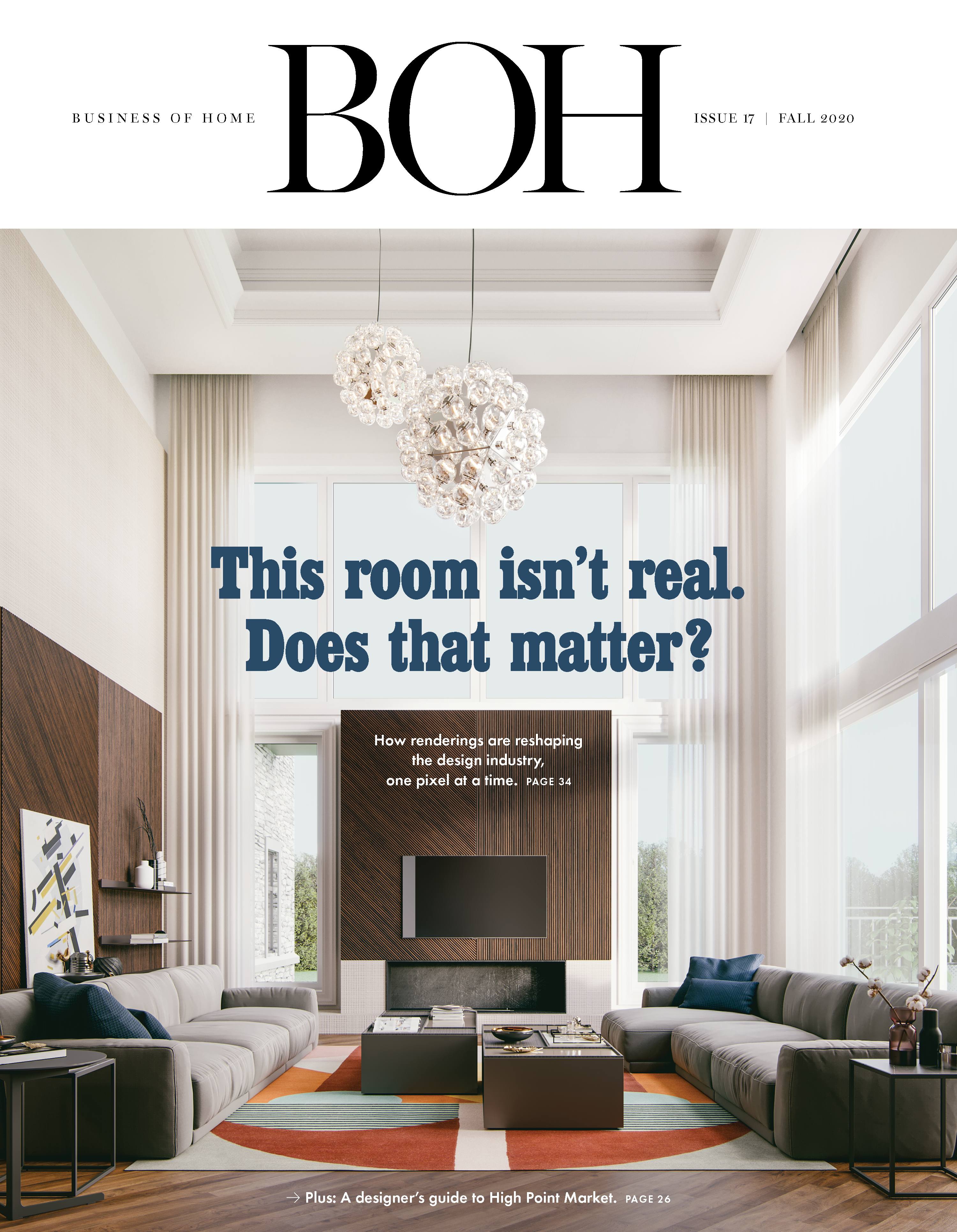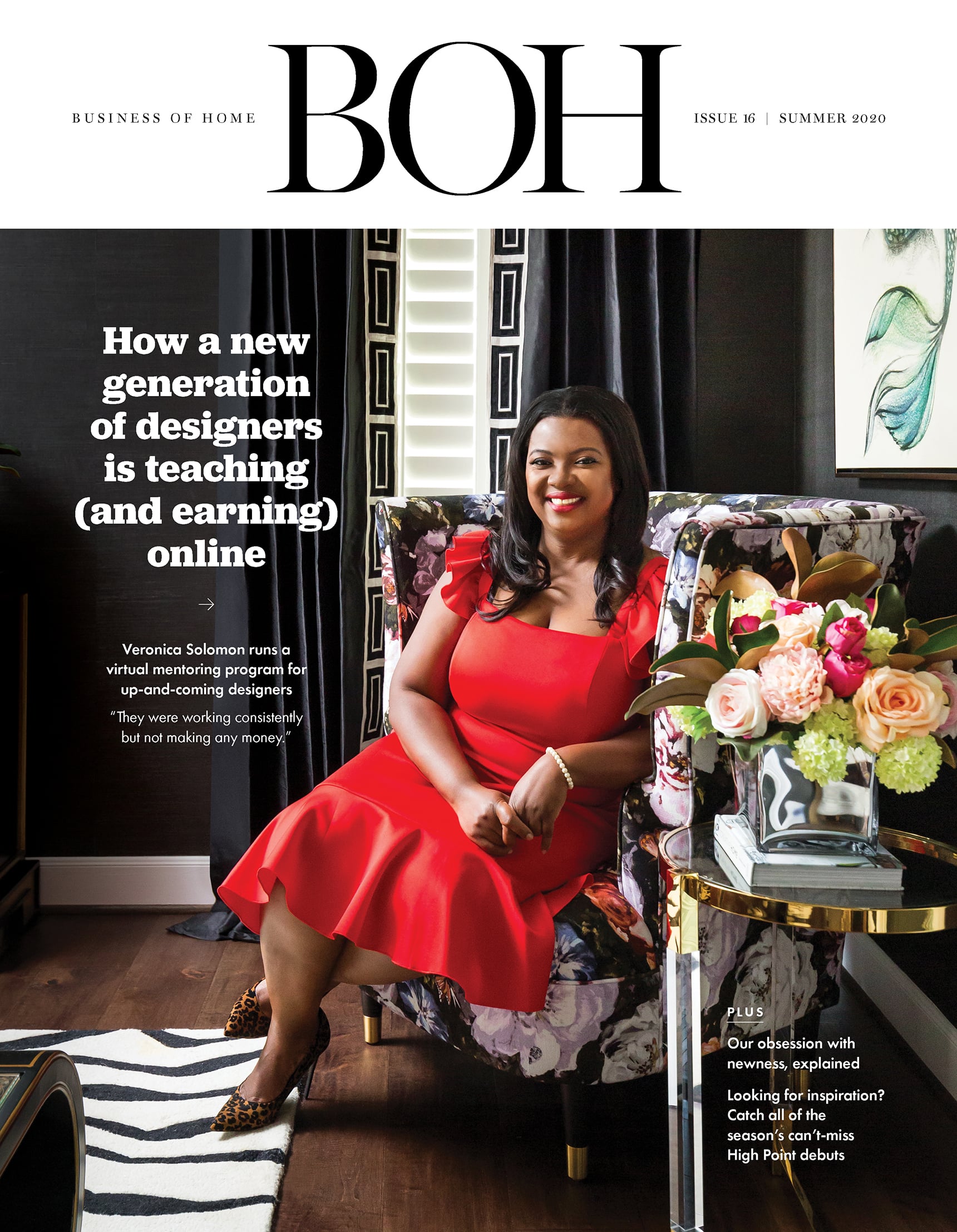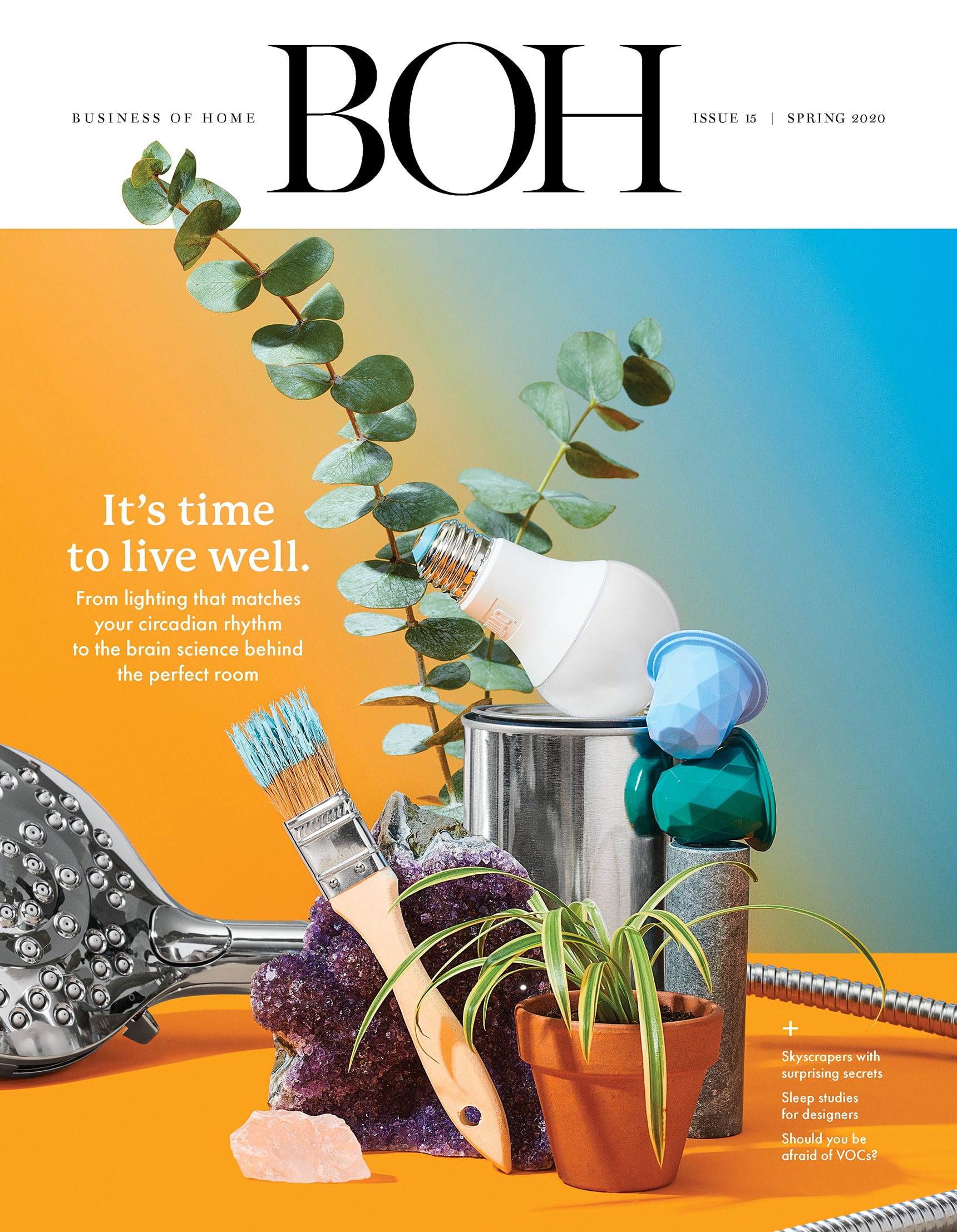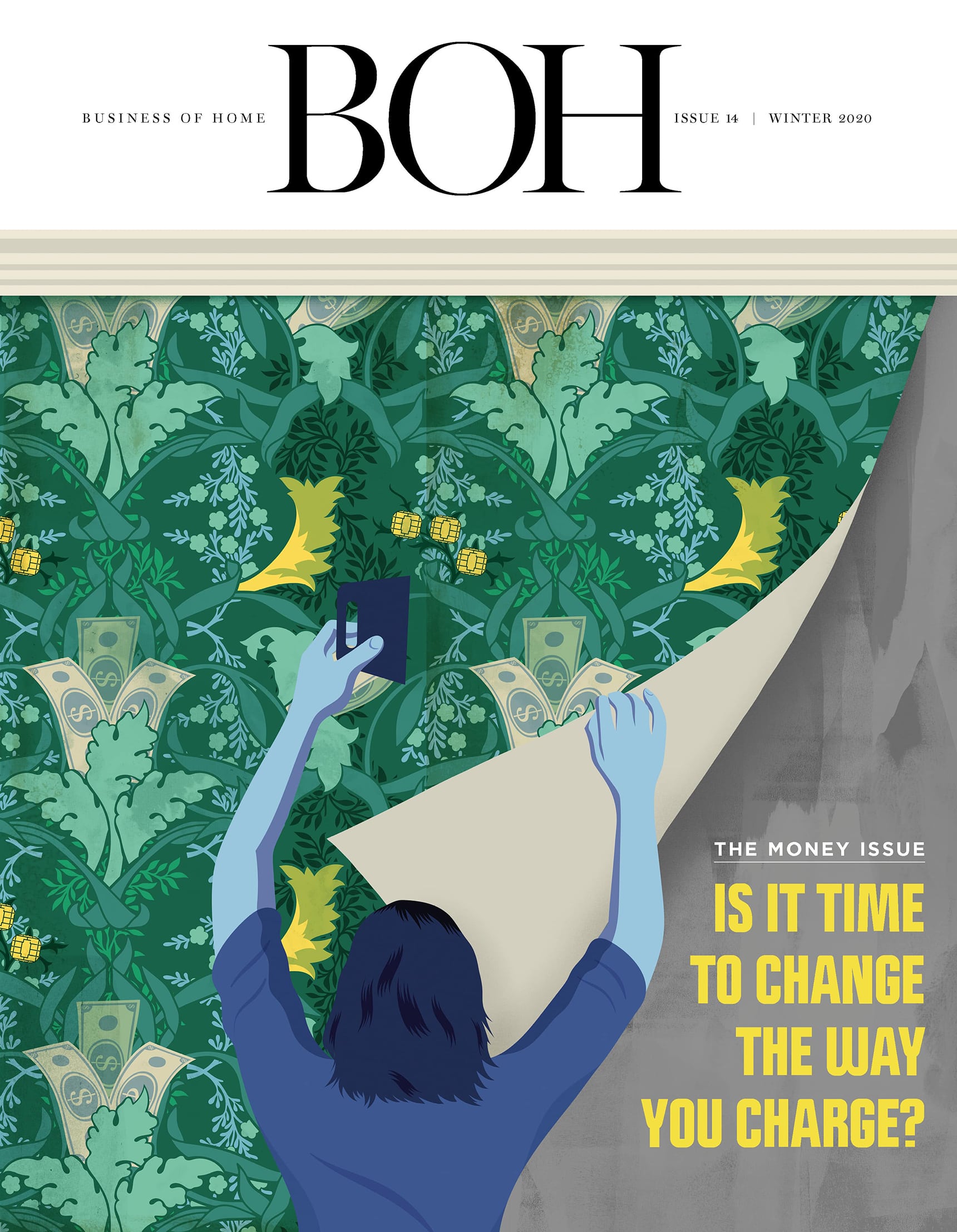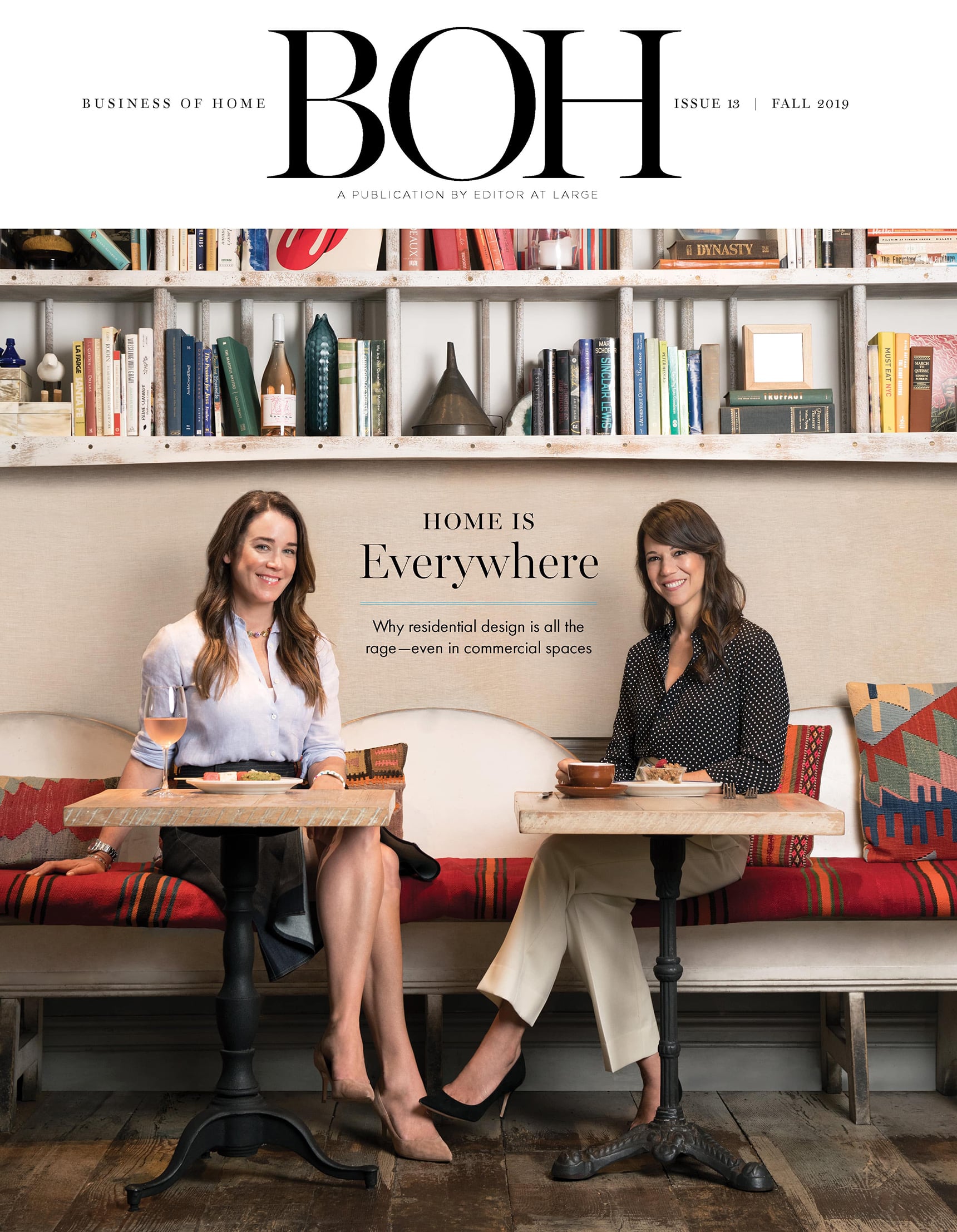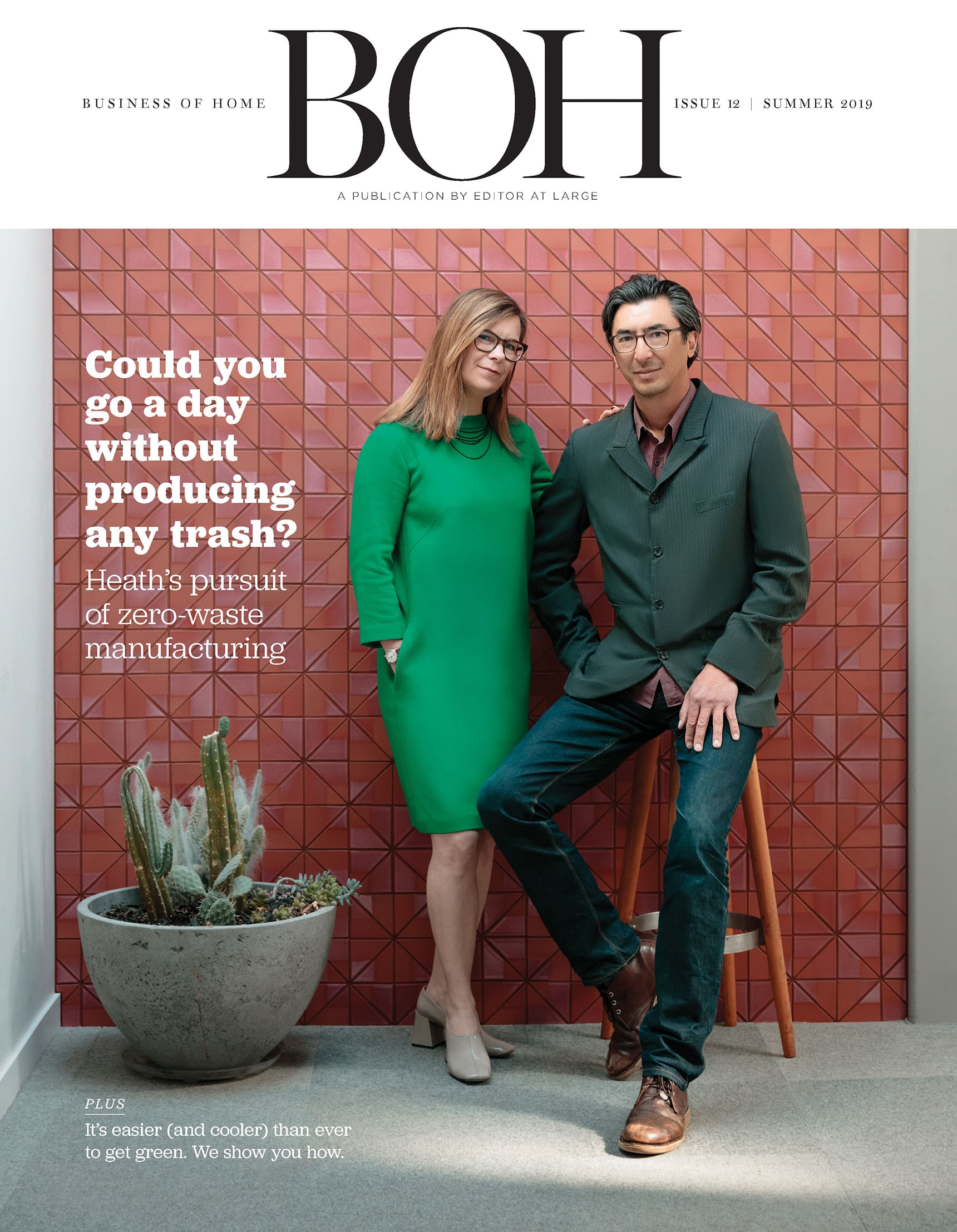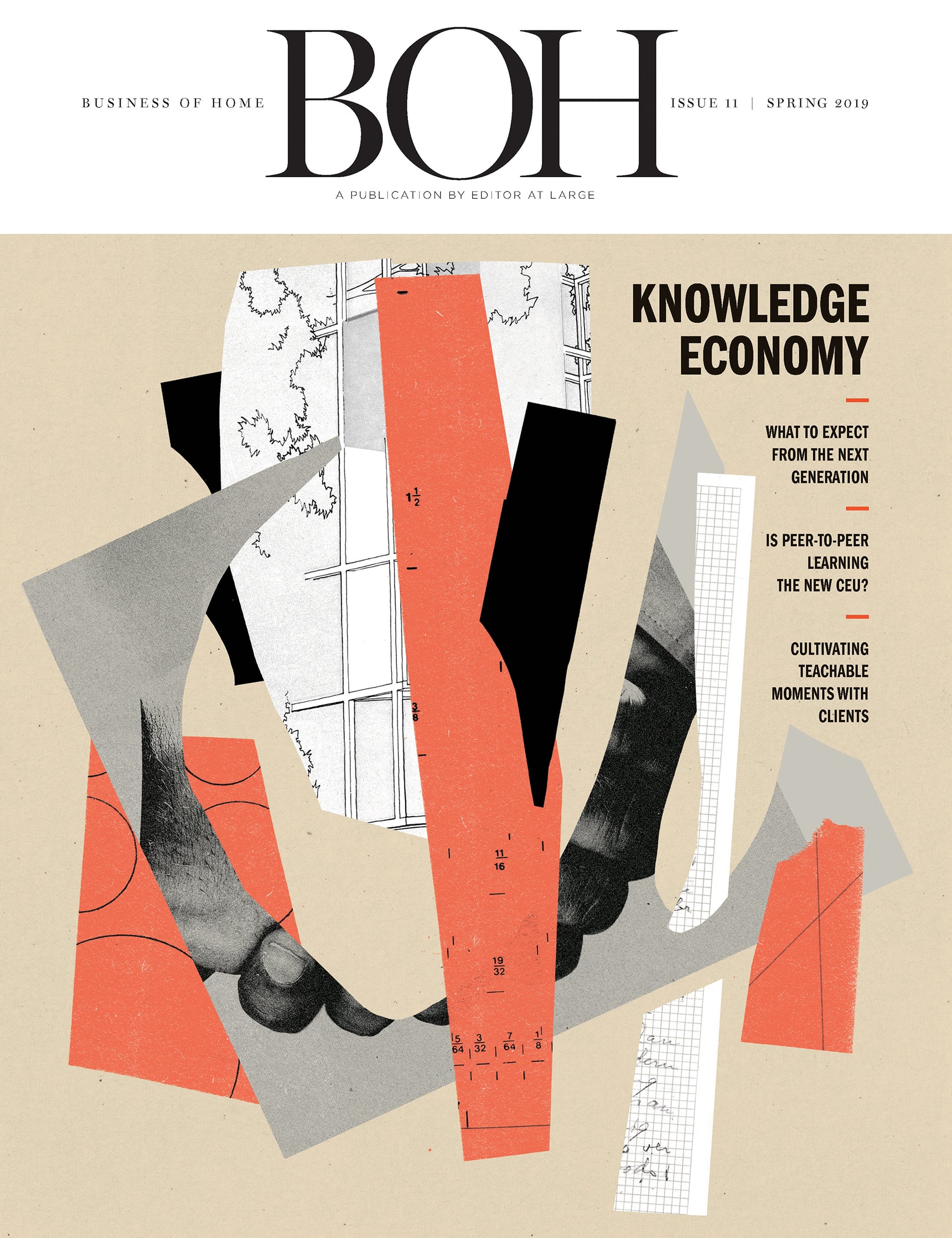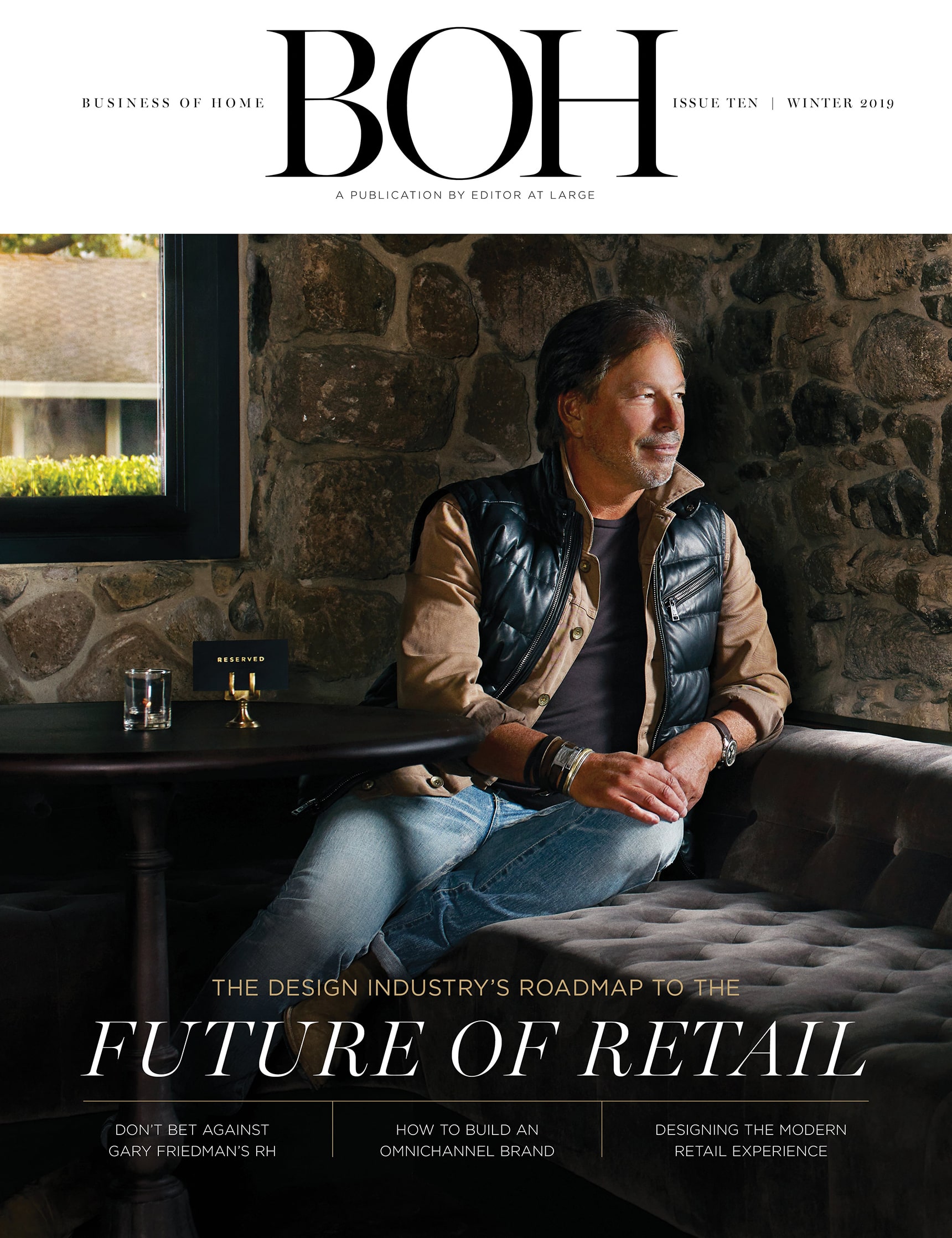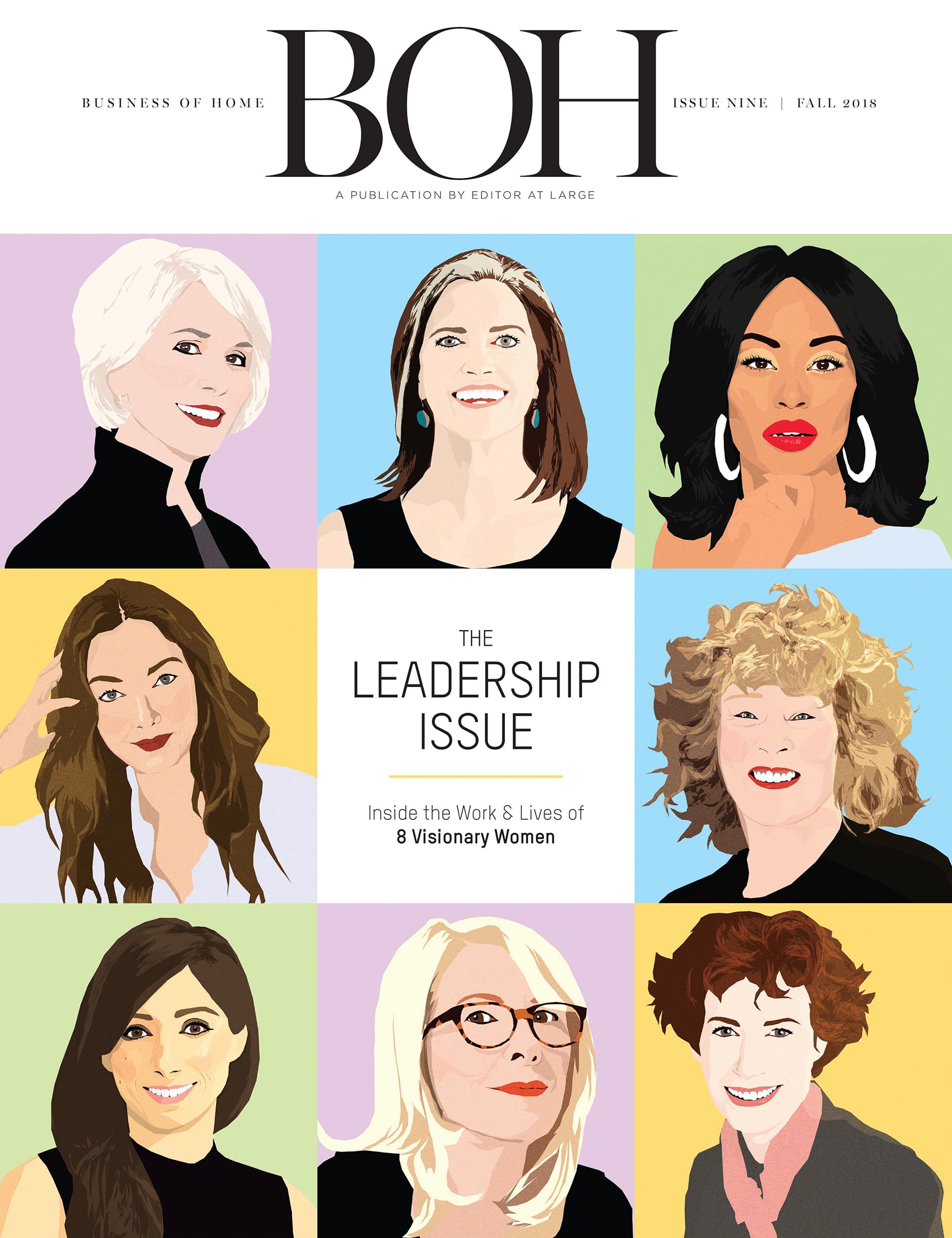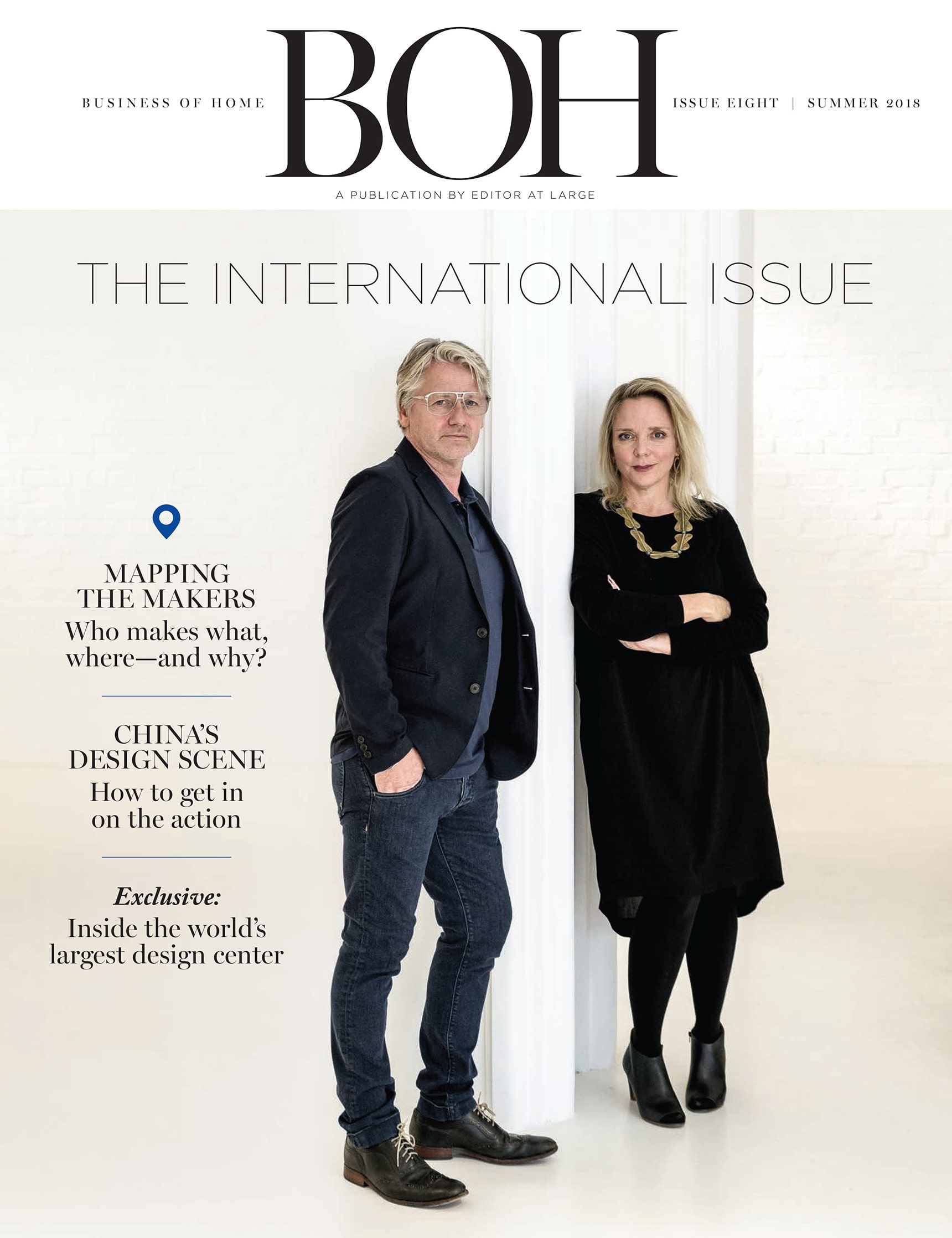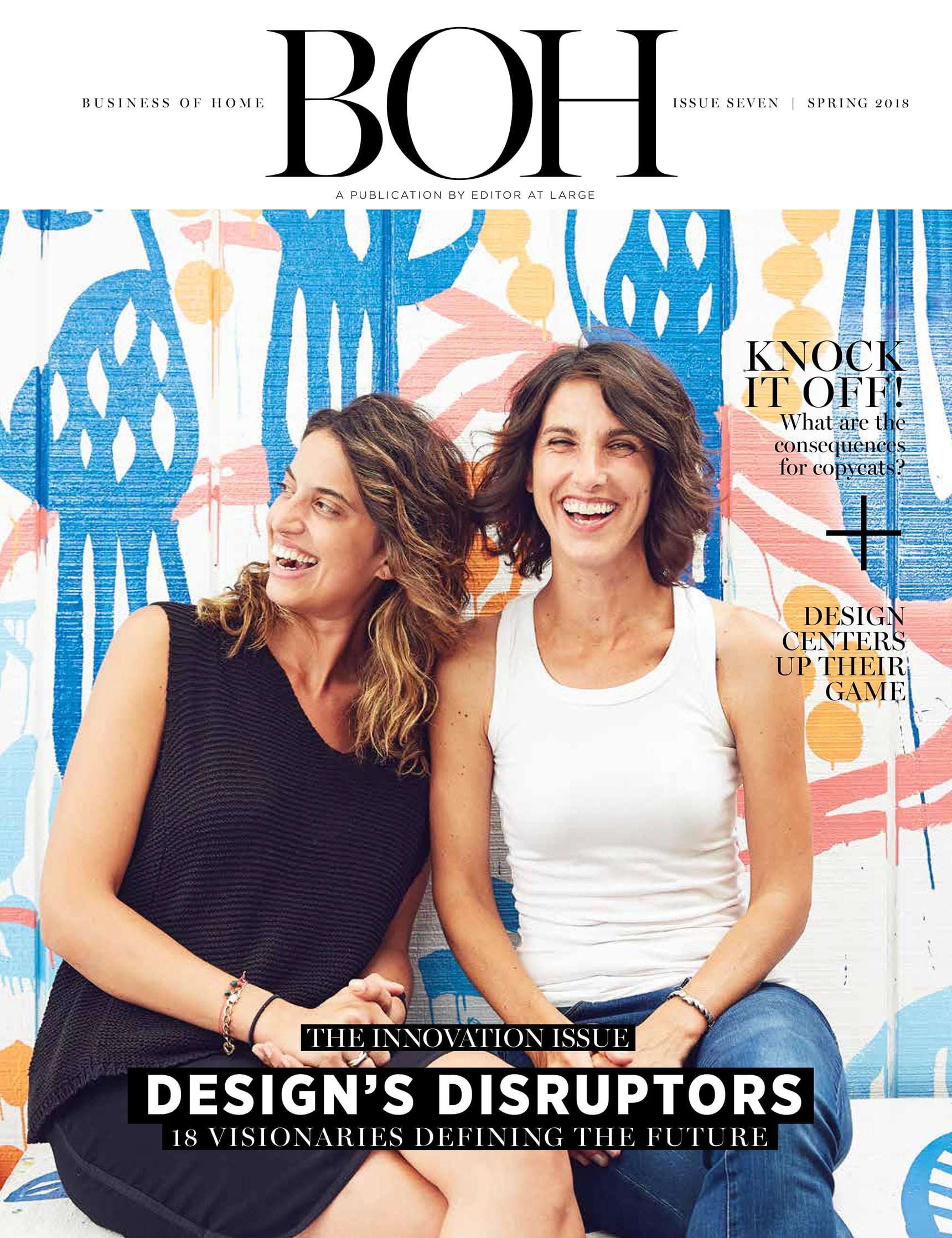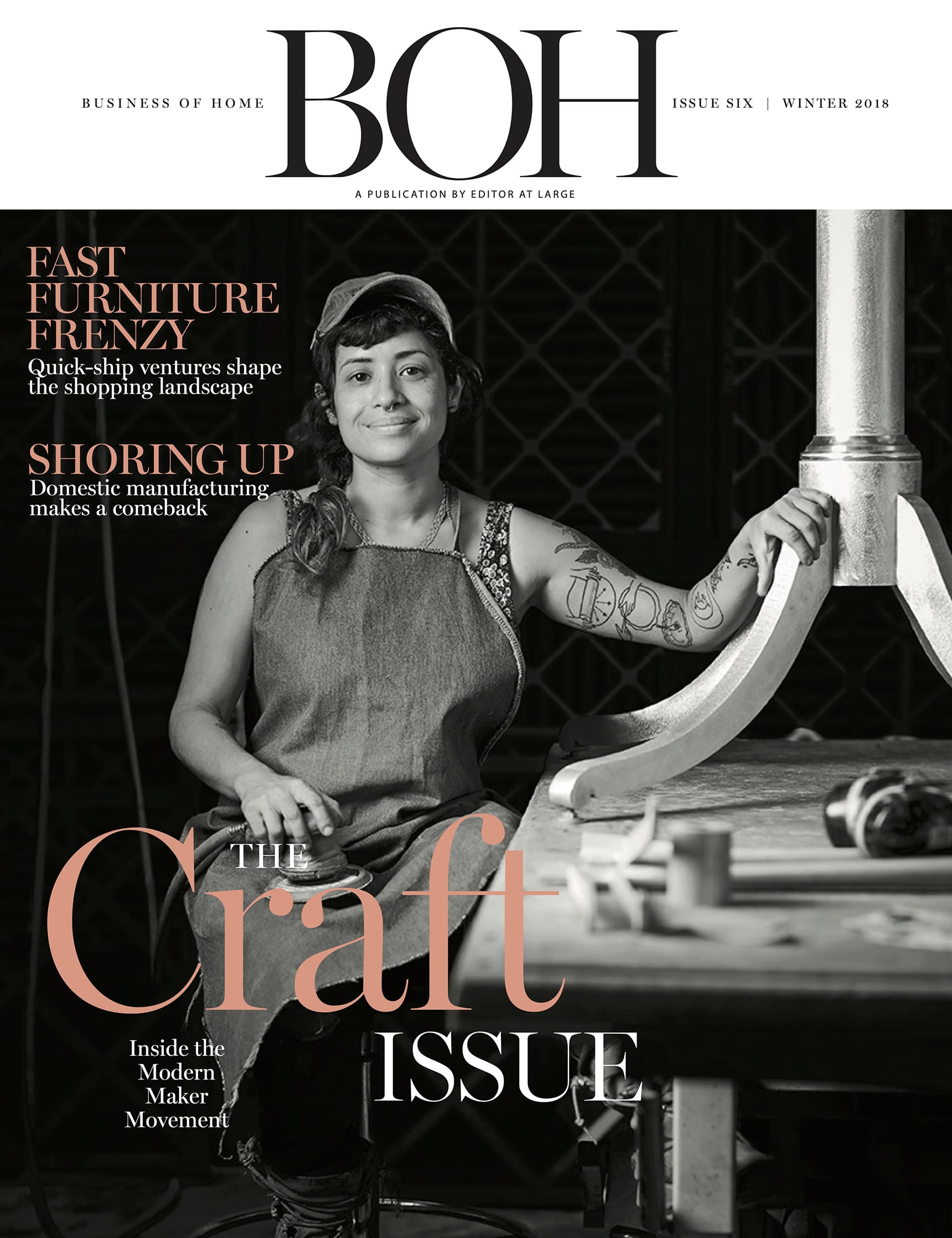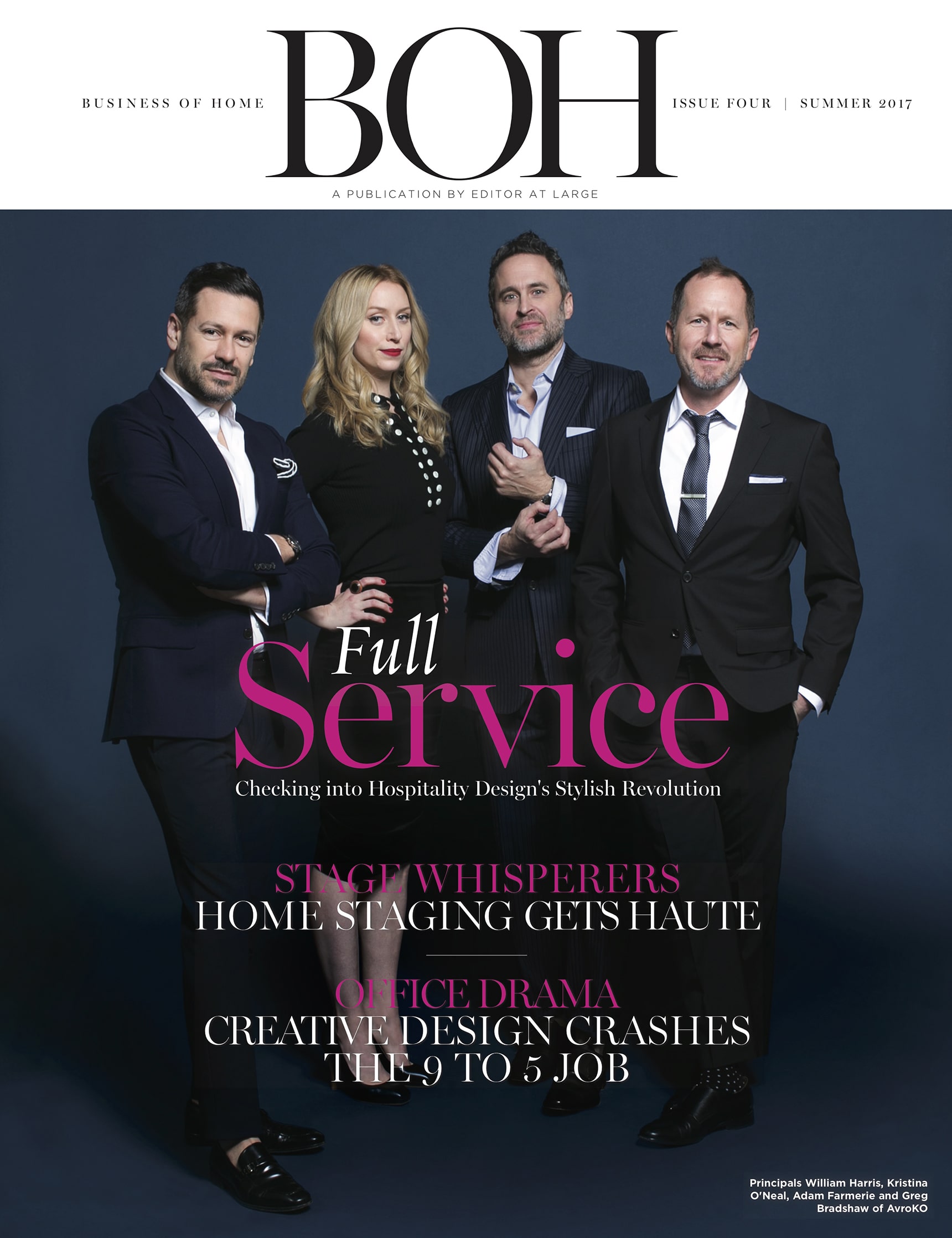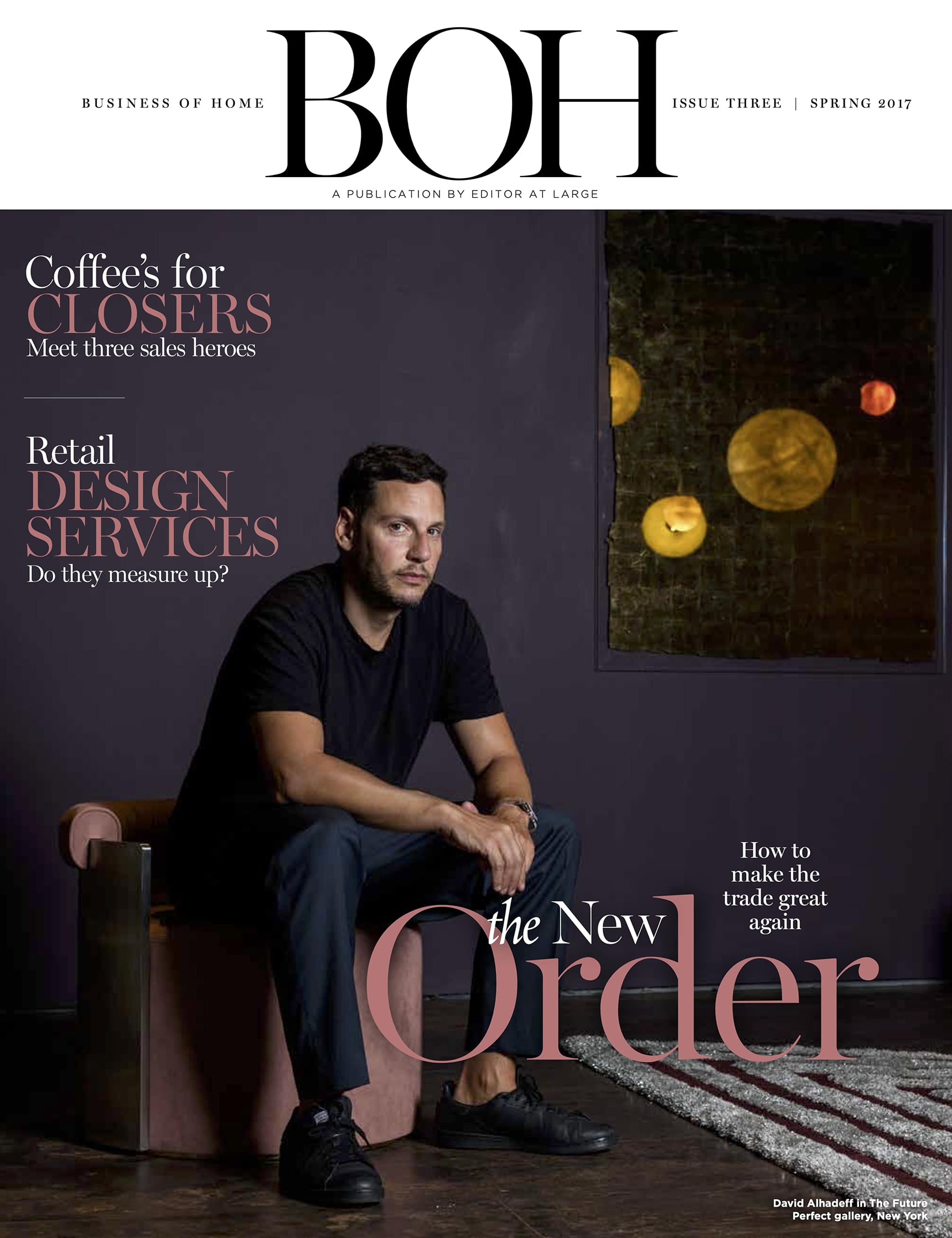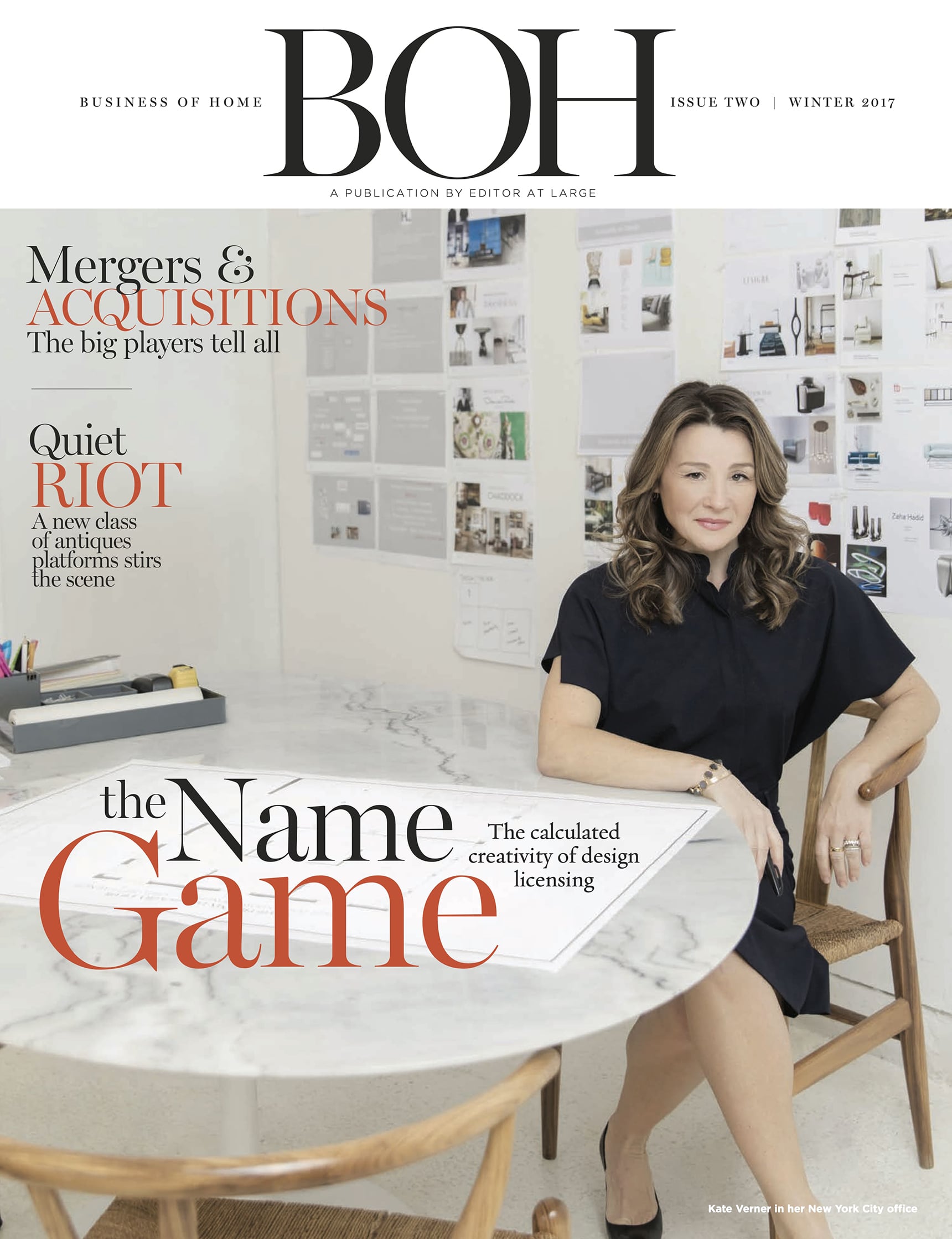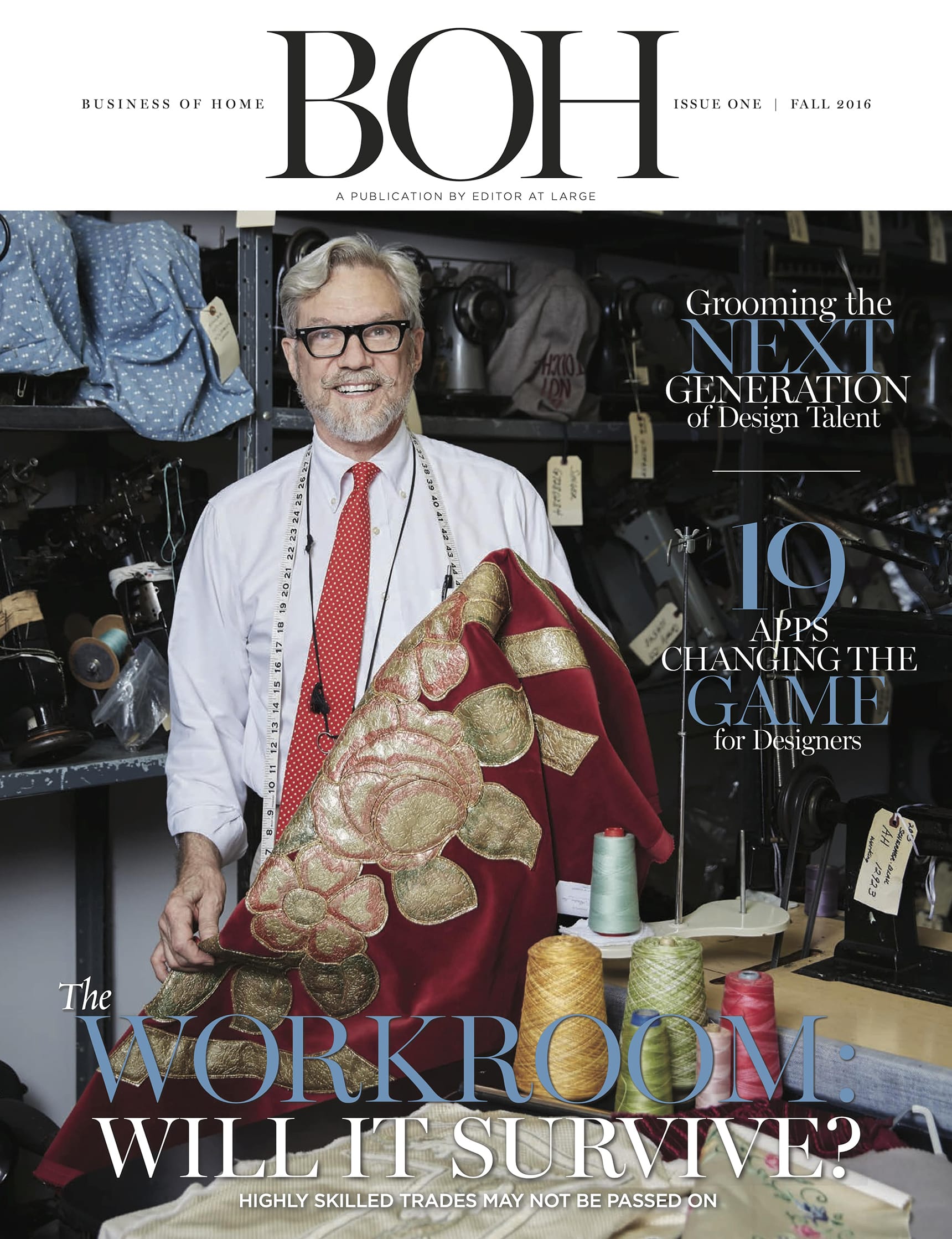How you introduce a client to your design process can have a profound impact on their experience with your firm. Tap into these fresh approaches to set the tone for a successful project.
There’s a tendency to define the beginning of a design project as the moment your pencil hits the drafting paper (or, these days, the moment you double-click on SketchUp). But the truth is, by that point, you’re already deep into the job. The real beginning of a project is the moment you pick up the phone and hear a potential client on the other end.
There’s something thrilling about that very early stage, when everything is pure possibility. Maybe this is the project that will end up on the cover of AD. Maybe this is the client who will enthusiastically sign off on custom everything—and it just so happens they’ve got a Caribbean beach house that needs some sprucing up too. On a lighter note, maybe this time, three out of five pieces won’t arrive damaged. It’s a beautiful moment, but also a delicate one. How many potentially great clients have bailed at the start of the project because the vibes were off? Or worse, how many times does the job turn sour halfway through because expectations weren’t clearly set at the beginning?
In an effort to pin down the best practices for onboarding a new client, BOH reached out to dozens of designers and business coaches across the country. As you’d imagine, everyone does it a little bit differently, but there is a basic structure that seems common across a wide swath of designers. If you don’t know where to start, here’s a template:
First, quickly vet the client, either on a call or with a short questionnaire, then follow up with some basic information about your process. Next, schedule a more in-depth conversation or meeting, then follow up with a proposal and contract. Finally, get the contract signed and collect a deposit, then send a welcome letter, have a kickoff meeting and begin the design process in earnest.
Of course, that’s not the only way to do it. Some designers do some preliminary creative work before getting paid. Others push more of the onboarding process until after the contract is signed. Even if you stick to the basic structure outlined above, there’s endless variation—and ultimately, it’s the little details that make all the difference. In truth, the best method is the one that works for you. Think of these as ideas to try out, not rules to follow.
Have a process
If there is a universal piece of advice for an onboarding process, it’s this: Have one. Even if you don’t gravitate toward questionnaires and welcome letters, you still need a system in place for turning a phone call into your next favorite client. Without some structure, you’ll struggle to understand what you’re doing right or wrong, why some clients seem to stick around forever and why others ghost your follow-ups.
Early on in Angela Hamwey’s career, her Cape Cod–based firm Mackenzie & Co. followed a looser onboarding process, where they would ask clients a barrage of questions about their lifestyle, their feelings about the design process, and their thoughts on how they wanted the project to unfold. “More often than not, we had people who were like deer in headlights,” she recalls. Over the years, Hamwey and her team have established a regimented, repeatable process that takes clients step-by-step from initial outreach to in-person meeting. “Our questions now prompt conversation, as opposed to ‘What’s your favorite color?’” she says. “The goal is to get to the design presentation and have very few revisions. Having a clear onboarding process absolutely helps us achieve that.”
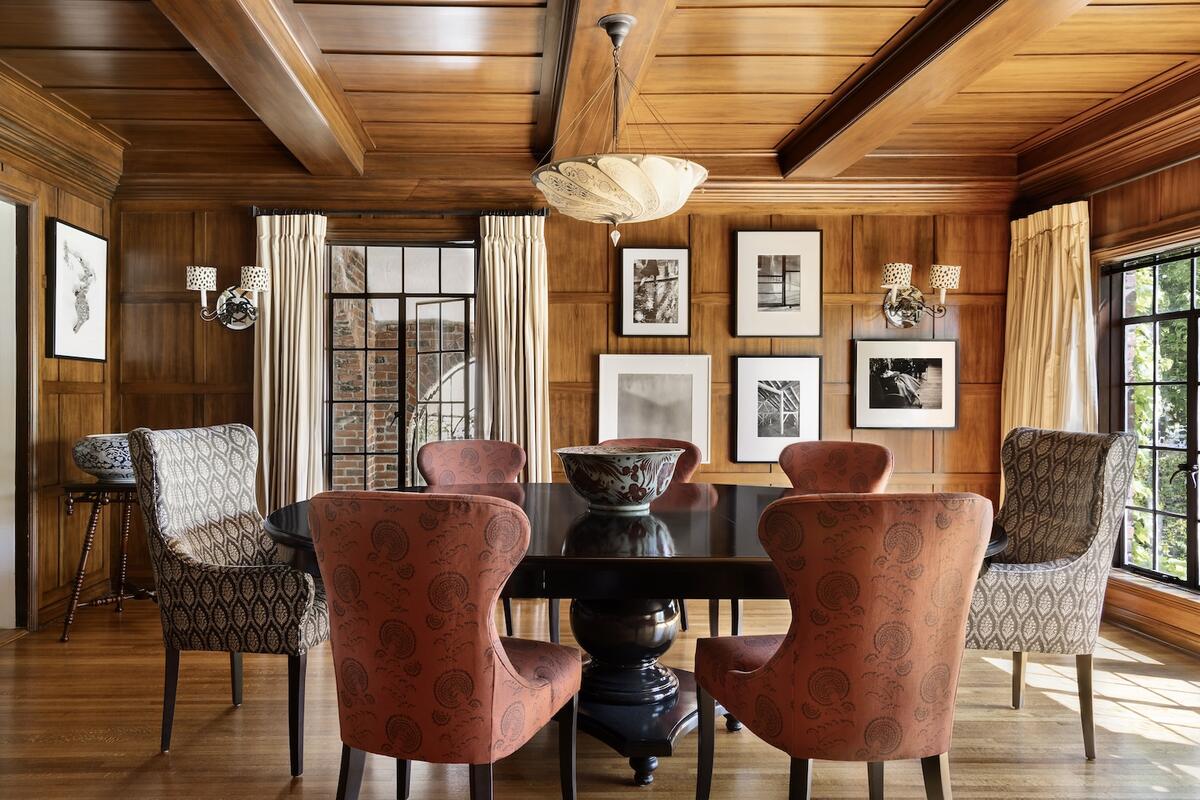
Get in the driver’s seat
For many designers, the onboarding process can feel like an extended job interview. That’s the wrong framing, say business coaches and veterans alike. If a client has reached out to you because they like your work, you’ve already passed the test. Everything from here on out is about determining whether the client is a fit for you. “I joke that it’s like dating: You didn’t go out with everybody that asked you out, did you?” says Michelle Lynne, who is the founder and principal of Dallas-based ML Interiors Group as well as a design business coach.
Every designer has a different set of criteria for vetting potential clients, whether it’s type of project, scope of work, budget threshold or level of creative freedom. (A quick aside: Don’t let industry pressure determine what makes sense for you. More than one designer told BOH that they were walking back their minimums because setting a high bar had caused them to miss out on projects they really wanted.)
No matter what feels right for your firm, the beginning of your process should lead to clarity on two essential points: money and time. “If the client has a viable budget and their timeline is reasonable, then you can move on to the next phase,” says Lynne, sharing a common piece of advice. There are many more elements of a great onboarding process, but if you don’t see eye to eye on those key points, nothing else matters.
Set the tone
Kelly Finley was up for a job. As CEO and creative director at Joy Street Design in Atlanta and Oakland, California, she put a prospective client—one she really wanted—through her onboarding process. It didn’t pan out; the person ended up canceling the consultation and choosing another designer. Looking to learn from the experience, Finley reached out in an informal way—a kind of, Hey, was it something I said?
“She said that we had too much of a system—that she needed someone really flexible, who could meet on weekends, things like that,” she recalls. “And I was like, ‘Well, you were perfectly right to choose the other designer.’ That was the best [feedback] I’ve ever gotten, because [she] could tell that this was not going to be a good fit. The process helped convey who we are.”
Finley’s experience speaks to a broader truth: The way you onboard a client should reflect how you’re ultimately going to work with them. If you like to be best friends, texting about sconces on a Sunday night, why be overly formal during the onboarding process? And if you’re hyperorganized and have everything on a spreadsheet, don’t have a discovery meeting over margaritas and scrawl your notes on a napkin.
Never stop branding
Once a client has jumped through the first few hoops, there’s a tendency to relax a little. That’s normal. Now that a contract is signed and a deposit is in your account, it’s healthy to ease up on the “sales” part of the process. But it’s a mistake to stop entirely.
As you send out communication to your clients—whether that’s a welcome packet, a proposal, or a project manual—it’s a good idea to continue to include your firm’s branding, and even project photos when appropriate. “If you give people generic documents without any style, you lose the opportunity to sell your client on who you are and what makes you special,” says Susannah Charbin, founder of The Beaux Arts, a creative agency that works with designers and design brands. The point is not just to get a quick signature on a contract, but to consistently reassure the client of your professionalism, values and style. It’s a subtle, unspoken shift—one that can lead to more trust, and often a bigger budget.
Giving your clients physical documents, especially if they’re beautifully produced, can have a secondary benefit. “You see clients keeping them on their coffee tables and sharing them with friends,” says Charbin. “It has a kind of evergreen longevity for continued marketing.”
Ask a million questions
New York designer Jeffrey Quaritius was at the very end of a job when he found out a crucial detail about his client. “They opened up this drawer in the [primary] bedroom and it was absolutely filled with sunglasses—it was this huge collection,” he recalls. “If I had known about that upfront, I absolutely would have come up with a solution for storing or displaying them instead of just having them end up in a drawer, which was not ideal.” For the next client, he got more specific in his questionnaire.
Quaritius belongs to the school of designers who give clients extensive questionnaires during the onboarding phase. In his case, it’s over 100 questions long. The point of such a lengthy document, he says, is to capture information that clients themselves rarely put on paper: what their morning routines are, how they like their coffee, how they sleep. Most people never have to explain how they live their lives; asking them to put it in writing helps prime the pump for a successful project.
“You can never ask a client too many personal questions,” says Quaritius. “People’s homes and the way they live—there are so many idiosyncrasies to the things people do routinely but you would never divulge it to someone in a conversation, because you just do it; you don’t necessarily think about why you do it. I’ve found that the sooner I have answers to these specific, niche questions, the easier the process is.”
Ask the right questions
Whatever tasks you end up giving your clients during the onboarding process, keep it fun—it shouldn’t feel too much like homework. “One of the things I ask about is fashion sense: Are they more minimal in their approach, or do they get dolled up on the weekends?” says Catasha Singleton, owner of Houston-based design firm ModChíc Interiors. “I have a multiple-choice section with pictures. It’s as much for them as it is for me, because it gets them thinking. It’s a little overboard, but it can help identify what resonates with people.”
Many designers agree that asking clients questions about their opinions on interior aesthetics during onboarding doesn’t get you far. For one, most clients don’t have the vocabulary to put what they really like into words. For another, getting them to define their taste in furniture and decor early on can put too many guardrails on a project
too soon. Plus, isn’t that what they’re hiring you for?
“People don’t really know what they’re looking for,” says Hamwey. “We ask about colors, travel and clues to help us get started, but not furniture. That’s a dead end.”
Keep the big stuff simple
Many highly sophisticated, brilliant and affluent people walk into the design process knowing zero. How much a bench-made sofa costs, how long a hand-knotted rug takes to make, what percentage a contractor will mark up materials—most people don’t ever need to think about these things until they are embarking on their own project. And because many clients start off a little disoriented, it’s a good idea to find ways to describe your process in easy-to-understand terms. In short: Break it into manageable steps; come up with language that simplifies things; and aim for clarity, not complexity.
“We have a five-phase process for all of our projects, which we break down in our spiel to new clients,” says Rasheeda Gray of Philadelphia-area design firm Gray Space Interiors. “A lot of them love that we have this formalized process that’s easy to wrap your head around.”
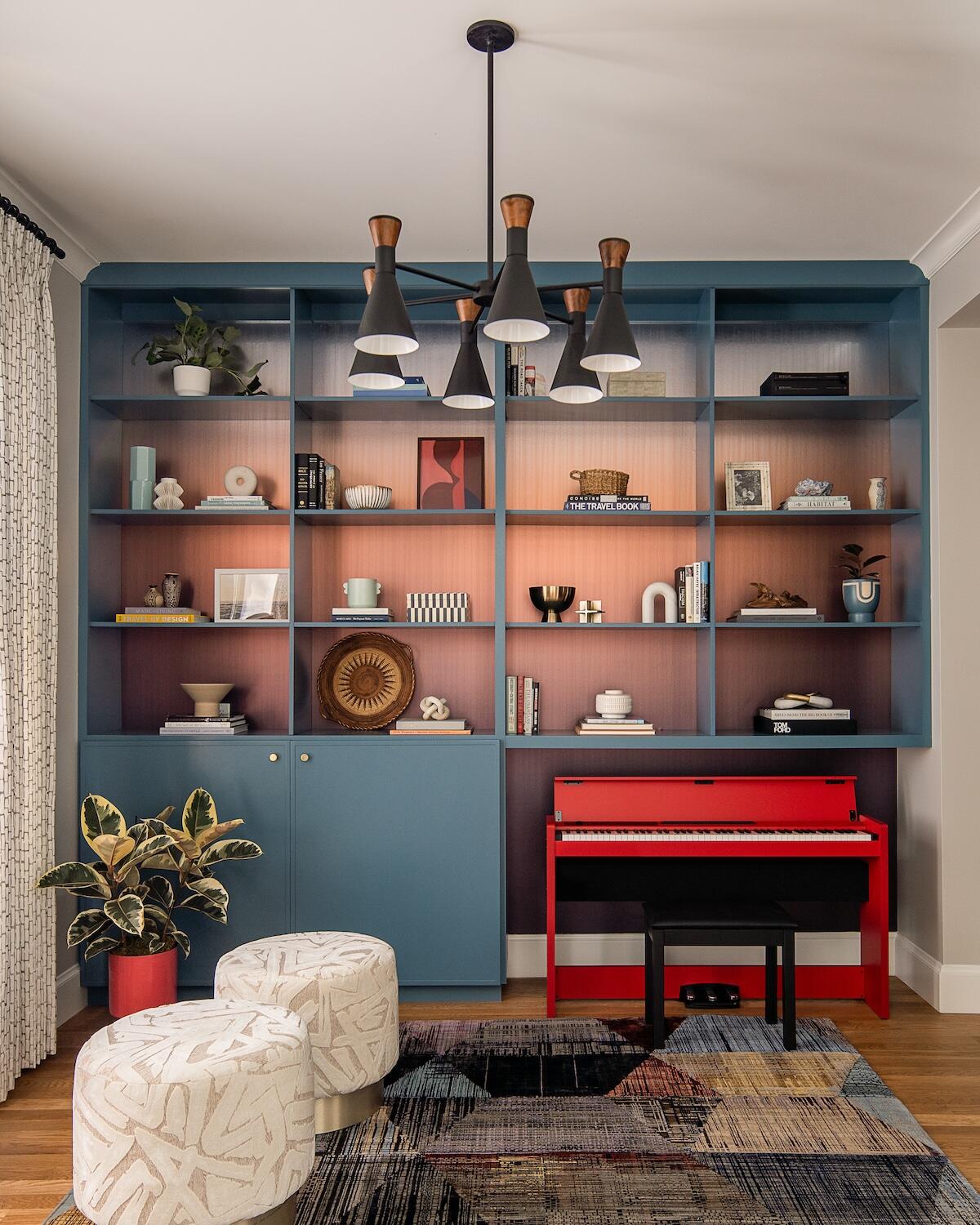
_(1)_pcbrianwetzel.jpg)
Be thorough on the details
At a high level, you should have simple, broad-strokes answers for client questions about how their design project will work. Because there are a lot of particularities to the process, most designers have some kind of document (it could be a service agreement that’s separate from the contract, part of the contract, or an entirely separate manual) that breaks down the little contingencies that often come up. This may include details like office hours or other things that you want to make understood but don’t need to be in your contract to protect your firm against potential litigation. Almost by definition, this document will be information overload for clients. Even if you sit down and go over it together with them early on (which many designers swear by), expect to have to repeat yourself. “I teach people: You have to be the mom in this situation. Do your kids understand everything the first time you tell it to them?” says Lynne.
The most important part is to get it all in writing so you’ll be on solid ground when the walls start getting torn down and the project gets real. “When people get a little squirrely and conveniently don’t remember something [we’ve definitely talked about], we can always say, ‘Let me refer you back to your service agreement,’” says Hamwey.
Consider the spouse
If you’re designing for a couple, you’re actually onboarding two separate clients, and they may be at radically different stages of the process. It’s not uncommon for one spouse to show up to a meeting having memorized your bio and looked at every photo you’ve ever posted to Instagram, while the other heard your name for the first time that morning.
There’s not exactly one fix to this issue. But whatever you do, don’t take for granted that just because one half of a couple knows what’s happening, you can plow full steam ahead. “I think there can be this assumption that everyone is on the same page, and you can get caught up in the enthusiasm of the more engaged client,” says Charbin. She recommends developing marketing documents that mix project imagery with process info—a way to quickly resell yourself to the party who is less in the loop while moving the ball forward on the project.
Outsource the onboard
The nice way to say it: Designers are empathetic, sympathetic, highly sensitive souls, keenly attuned to what others need. The less graceful way to say it: Designers are often people pleasers. However you phrase it, most will agree that there is a tendency toward yes in this profession. That’s generally a good thing, but it can backfire during the onboarding process.
“I want to help everybody. I get excited about the newest project, and sometimes I stretch a little outside of my comfort zone, ignore red flags and get into something that may not be the perfect fit,” says Los Angeles–based designer Betsy Burnham. Her solution? Have a team member take the first call. “It’s hard not to be flattered when somebody new calls and has a great big project,” she says. “If someone else in the office takes the call, they can be a little more removed.”
Show them the money
The biggest pain point of the onboarding process, many designers say, is (surprise!) money. The problems can come from both sides of the equation. Designers, hesitant to scare off a client, sometimes avoid real talk about money at the outset, leading to confusion down the line. Meanwhile, some clients simply have no idea how much money is required for a serious project and give squishy, unhelpful information about their budget.
One way to preempt the issue is to send a sample budget breakdown in an informational packet after the vetting call. There are a variety of ways to do this: Some designers include “good/better/best” options, while others provide a budget they consider to be roughly “average” for their firm. However the information is conveyed, it gets the budget conversation started with real dollar signs and in a nonstressful style.
“After the initial discovery call, I’ll send over a 12-page brochure that includes all the fluffy stuff about who I am and how my firm came to be. Then I get into what they really want to know: Here are the numbers,” says Singleton. “I’ll include tier one, tier two and tier three for different spaces—a living room, a bedroom, a game room, a home theater. I have a lot of data from past projects, which helps me give clear estimates.”
If you have tons of projects under your belt, sending over a rough budget should be no problem. But even if you’re new to the game, there are ways to come up with an estimate. “When I first started, before I was working with the trade, I just went to retail websites and started filling up a shopping cart with pieces I liked,” says Singleton. The total price offered a surprisingly accurate jumping-off place.
Try automation
The personal touch is part of any successful onboarding process—clients want to know that they have your direct attention and that your approach is tailored to meet their needs. However, for the early stages of onboarding, many designers are finding interesting ways to make automated emails a crucial part of their process. The most common is an auto-reply that goes out as soon as a client has filled out an online form indicating interest in your services.
“The feedback we get is that, if you do this, the client typically ends up booking a call with you long before they’ve heard back from any other designers they reached out to,” says Nicole Heymer of Glory & Brand, a marketing and consulting company specializing in the design industry. There are lots of ways to customize an automated note—for example, if a client filled out a form indicating they had a beach house, you could send an email that includes images of seaside projects. The crucial ingredient is to give clients a quick touch point, even if they fill out a form at two in the morning.
“You’re not looking to pretend it’s actually you sending the email; you’re letting clients know someone is going to reach out to them individually,” adds Heymer. “In the meantime, the client is getting the sense that they’ve been heard.”
At its best, automation—which can be used for everything from Q&As to reminders right before an in-person meeting—eases the burden on your staff and helps the onboarding process stay consistent. “At the very beginning, I want our clients to learn as much as possible about how we work with as little involvement as possible,” says Gray. “But after a certain point, really nothing is automated.”
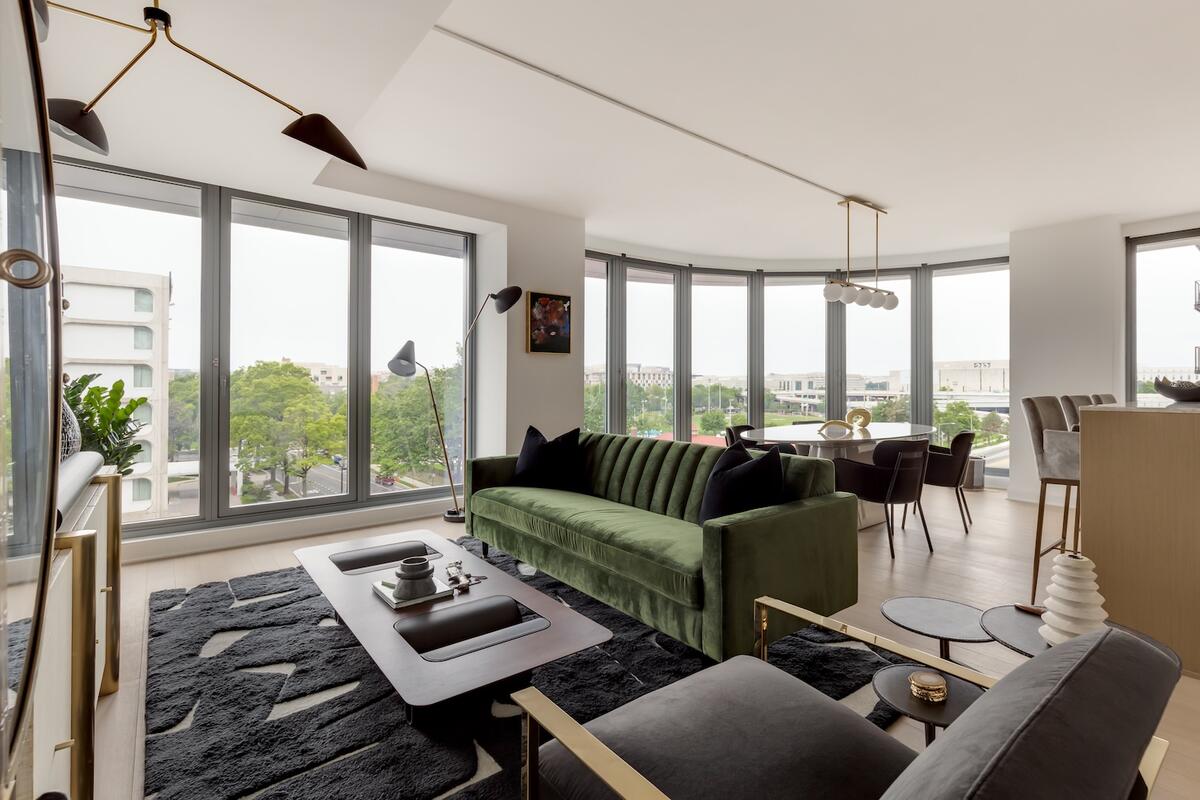
Gift smart
The art of gifting seems to play an increasingly large role in the way designers keep the vibes positive with their clients these days (for a full gifting breakdown, see page 44). Onboarding is no exception, and many designers have found clever ways to work the practice into their process. Hamwey sends clients a branded tote bag with leather handles. It’s a cute present, and a marketing moment too, but the bag also serves a practical purpose: “When we send them samples, we tell them, ‘Gather all of your things in your Mac & Co. bag,’” she says. “If you want to go back to a sample, they will all be in one place for you in your busy lives. We know it’s going to be problematic to keep all these bits together—you know, ‘Here’s a knob for your upstairs bathroom!’—so having a place to put things like that is useful.”
Other approaches to onboarding gifts look to deepen the personal bond and show the client you’re paying attention. “In my questionnaire, I ask them what their favorite flower is,” says Gray. “Once they become a client, I send them a bouquet.”
Test your own system
You probably wouldn’t spec a sofa without sitting in it first. So why would you roll out a process for your firm that you hadn’t road tested? Admittedly, this is a bigger challenge for some than others—if your process is mainly a series of phone calls, well, it’s difficult to chat with yourself. But at the very least, have a close friend go through the motions of Googling you and trying to set up an introductory call. If it’s at all complicated, that’s something to work on.
If you have a more complex onboarding system—anything that includes forms, questionnaires or automated emails—then you should absolutely take the time to do a test run yourself, and enlist friends and family to do the same. You may find typos, unexpected technical glitches, questions that seemed fun when you wrote them but are boring to answer or yield minimal intel, or grainy photos galore.
Above all, think of your onboarding procedure as a never-ending work in progress, not something to set and forget. “It’s an annual thing for us to look at our questionnaires and process,” says Hamwey. “We’re always adding and subtracting things as we go. You have to keep tinkering.”




